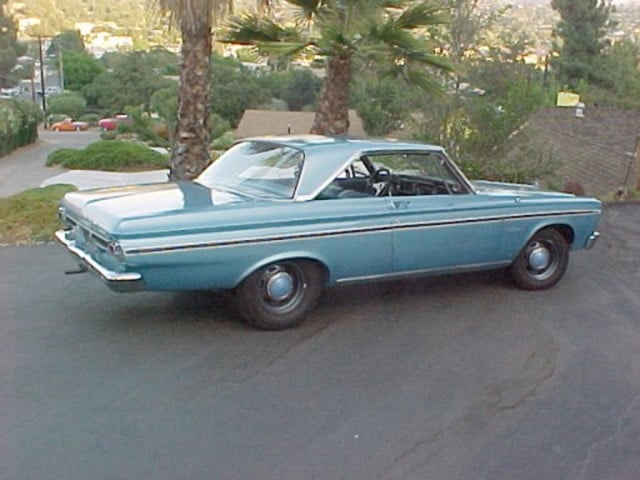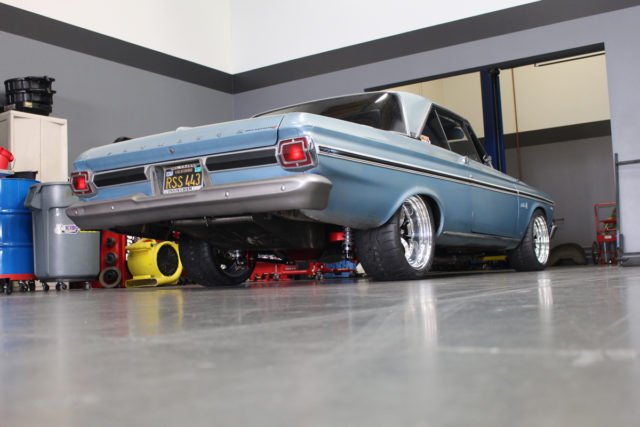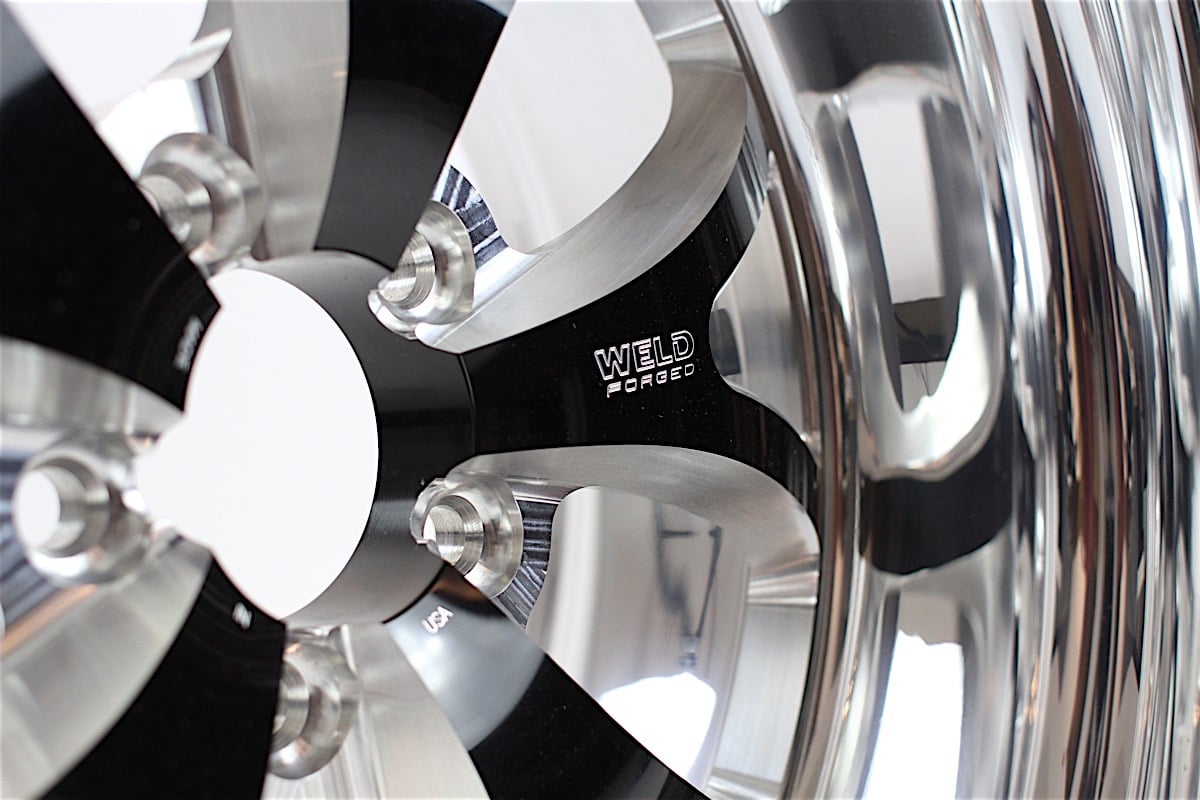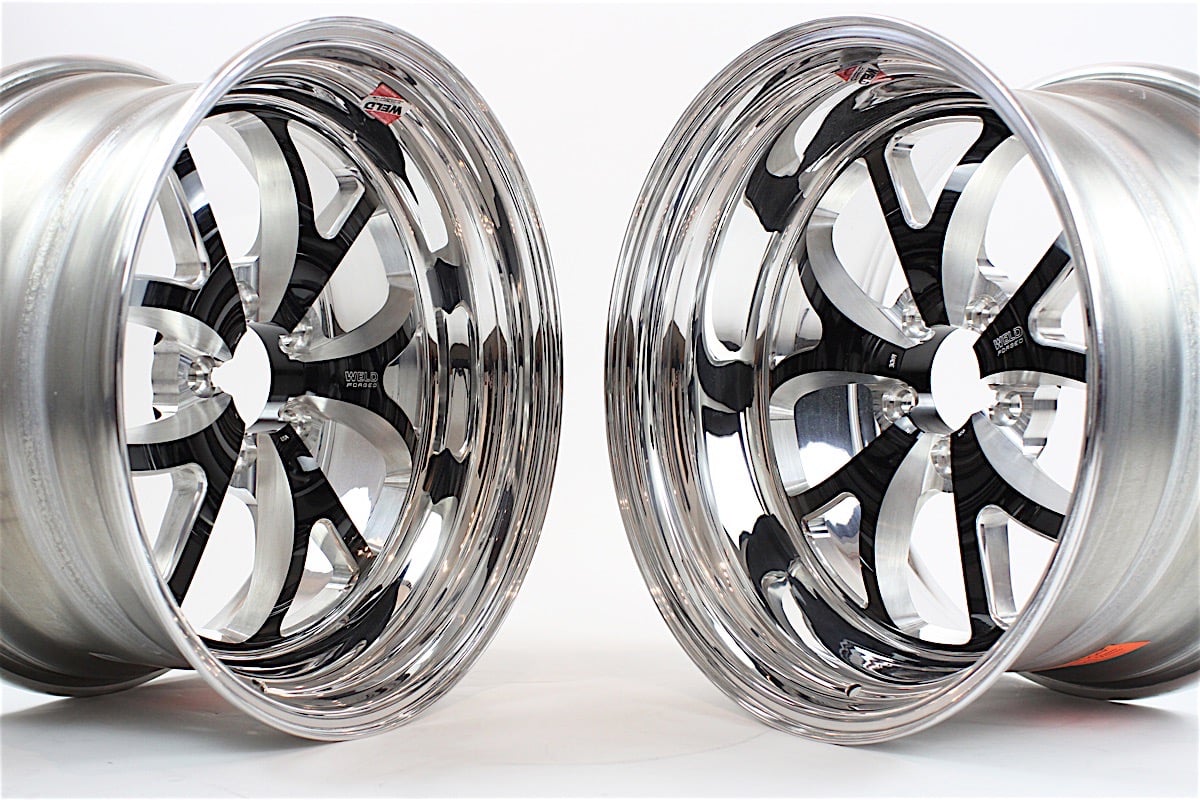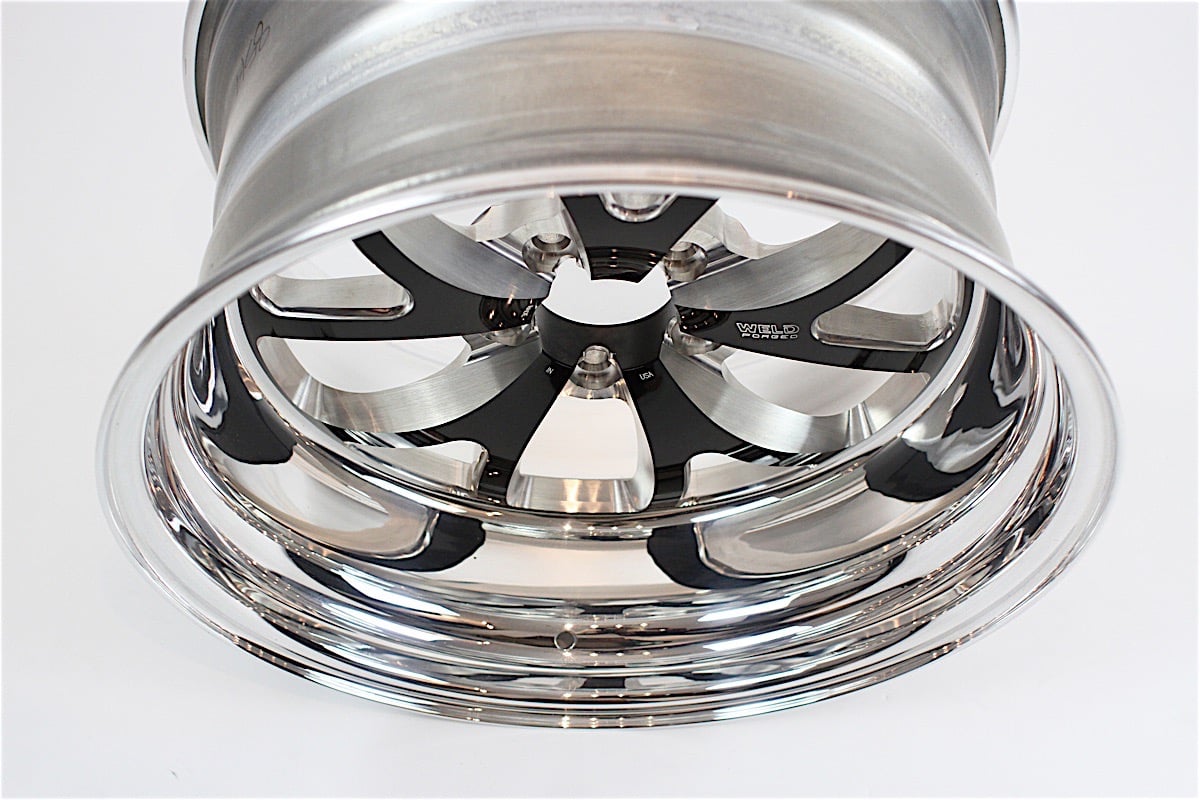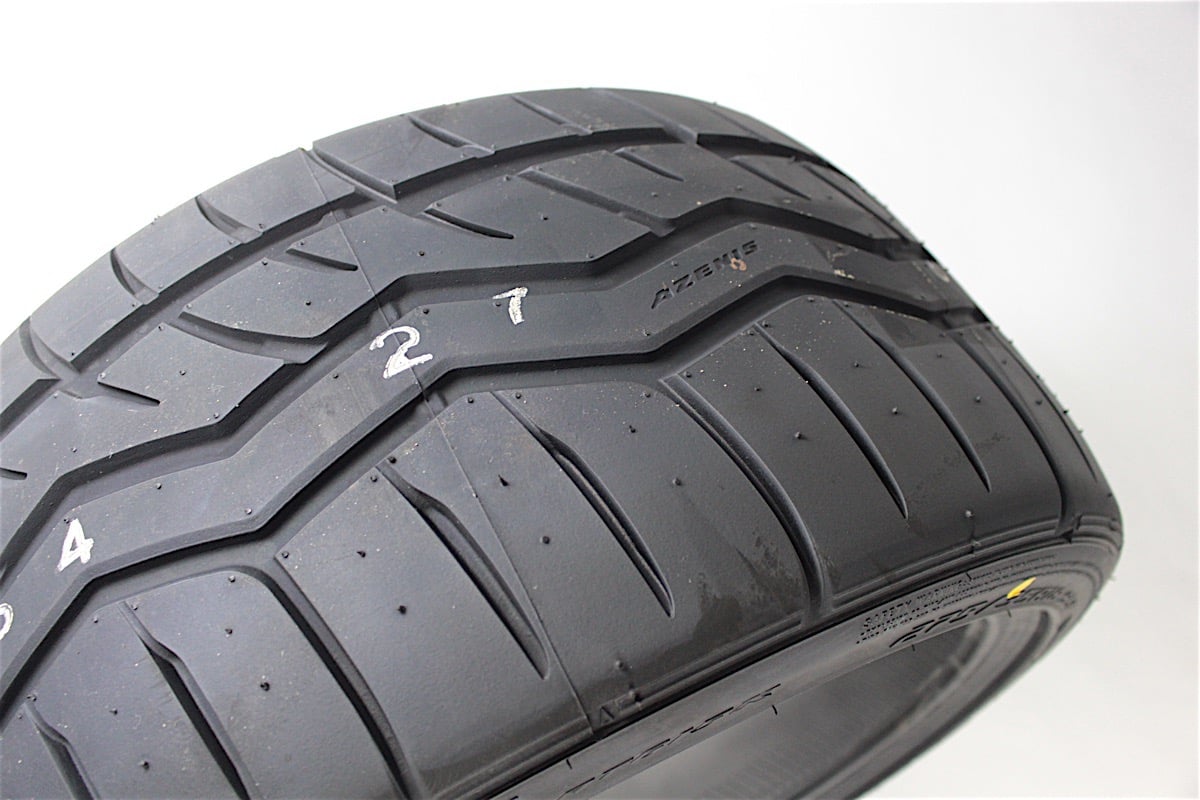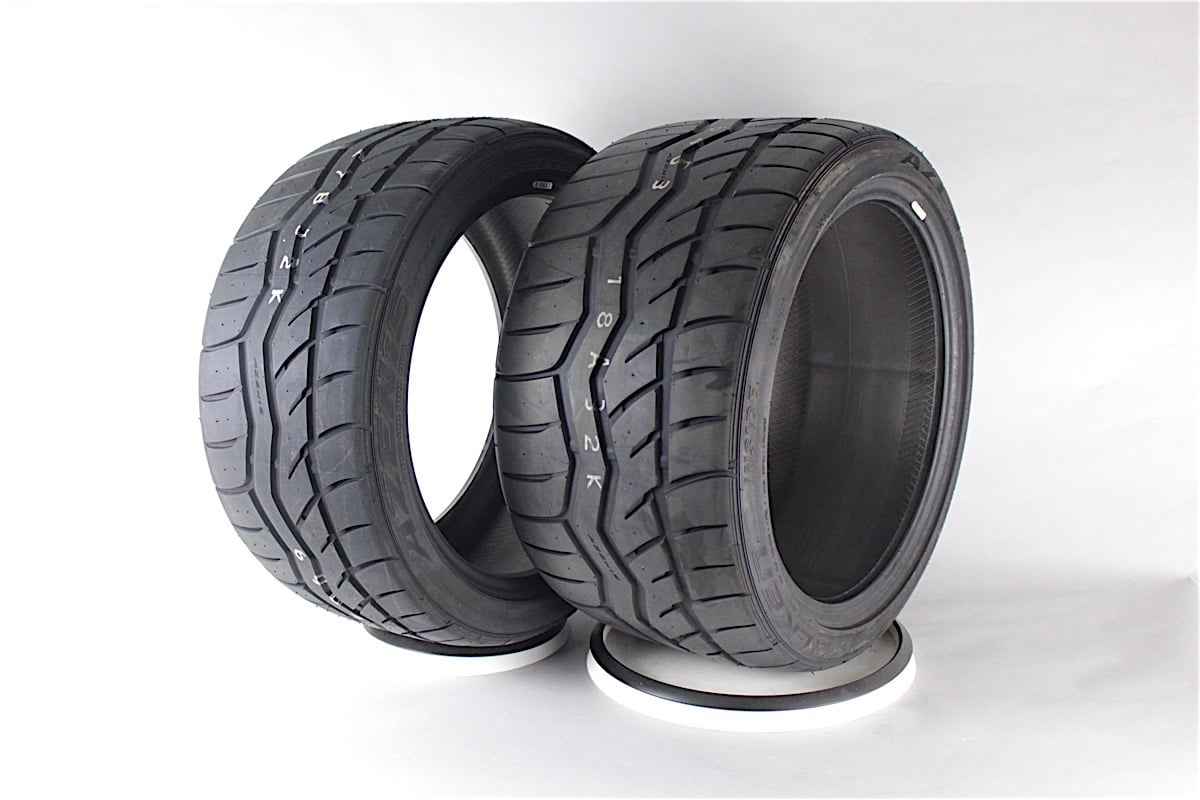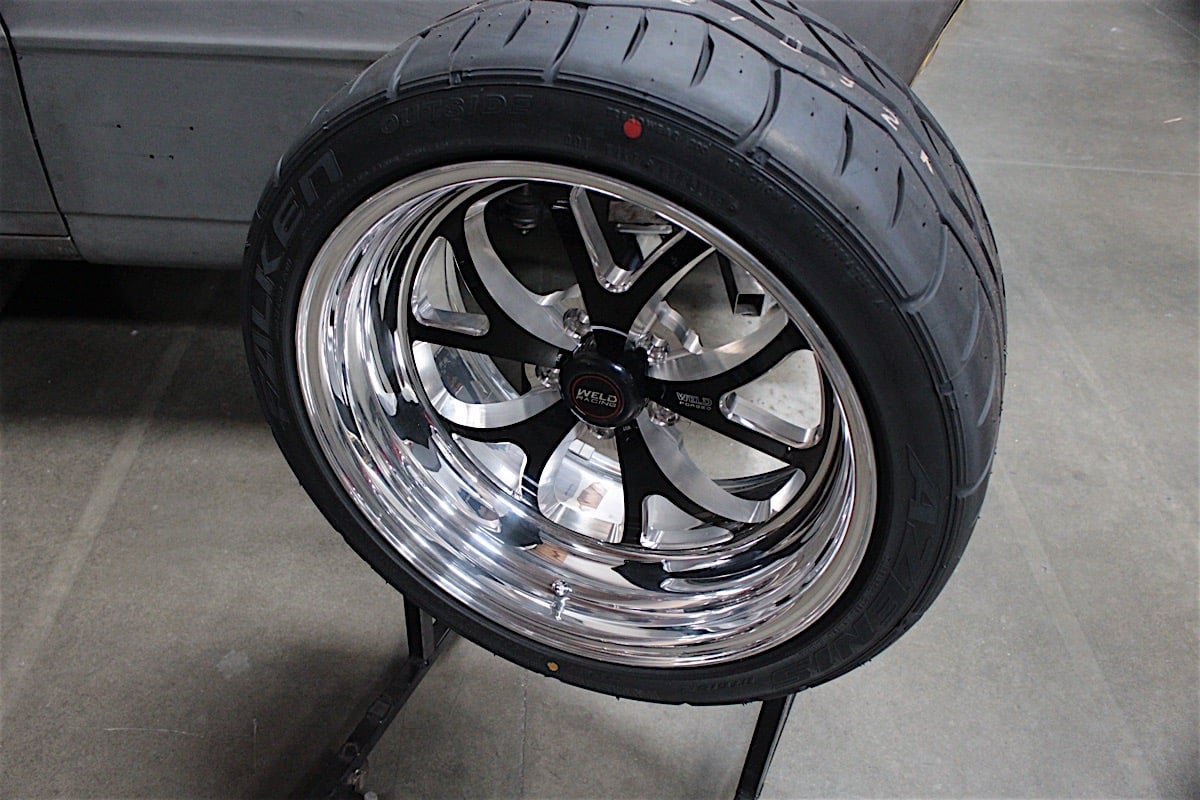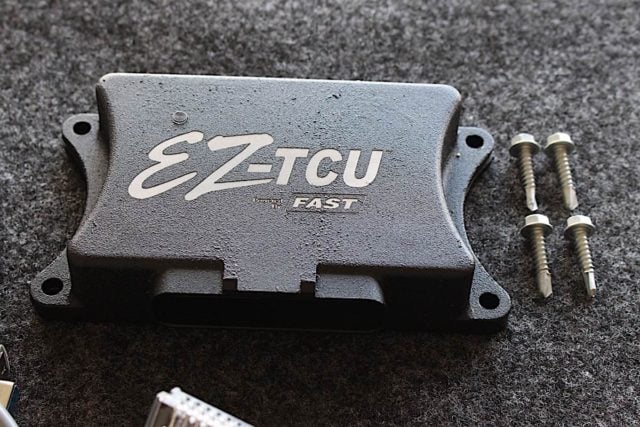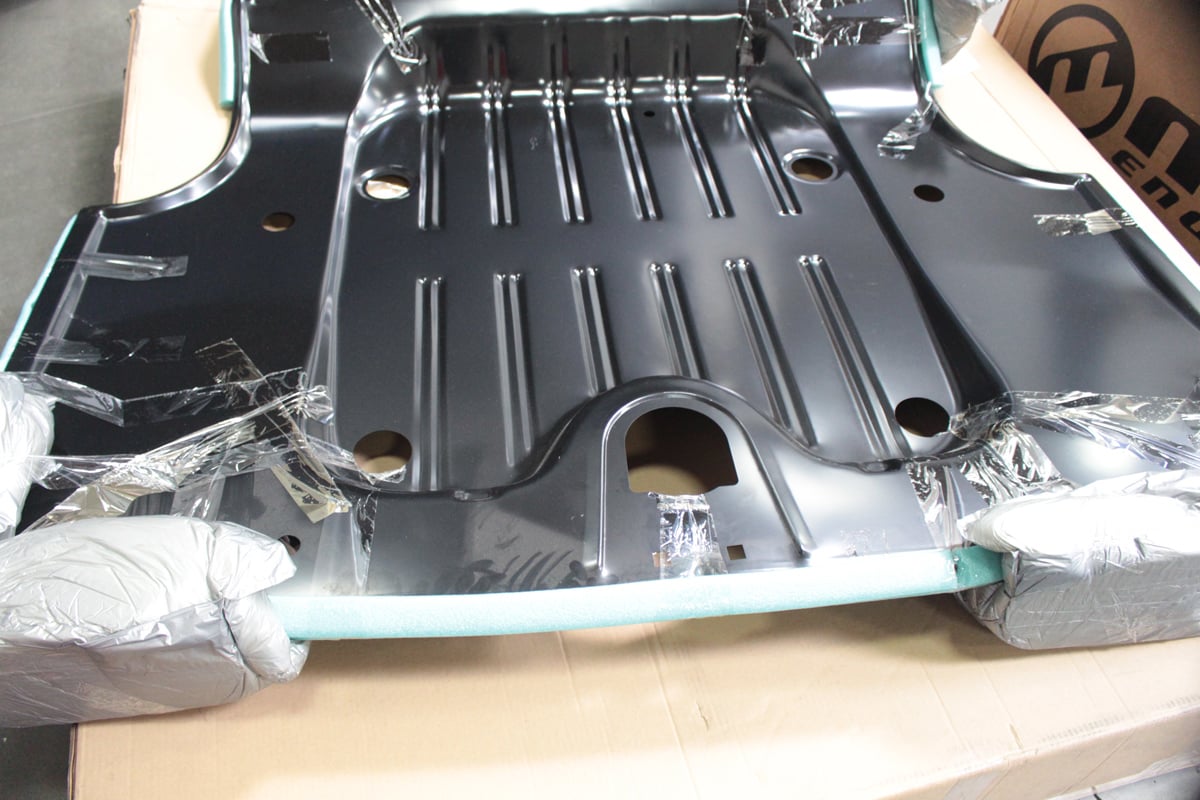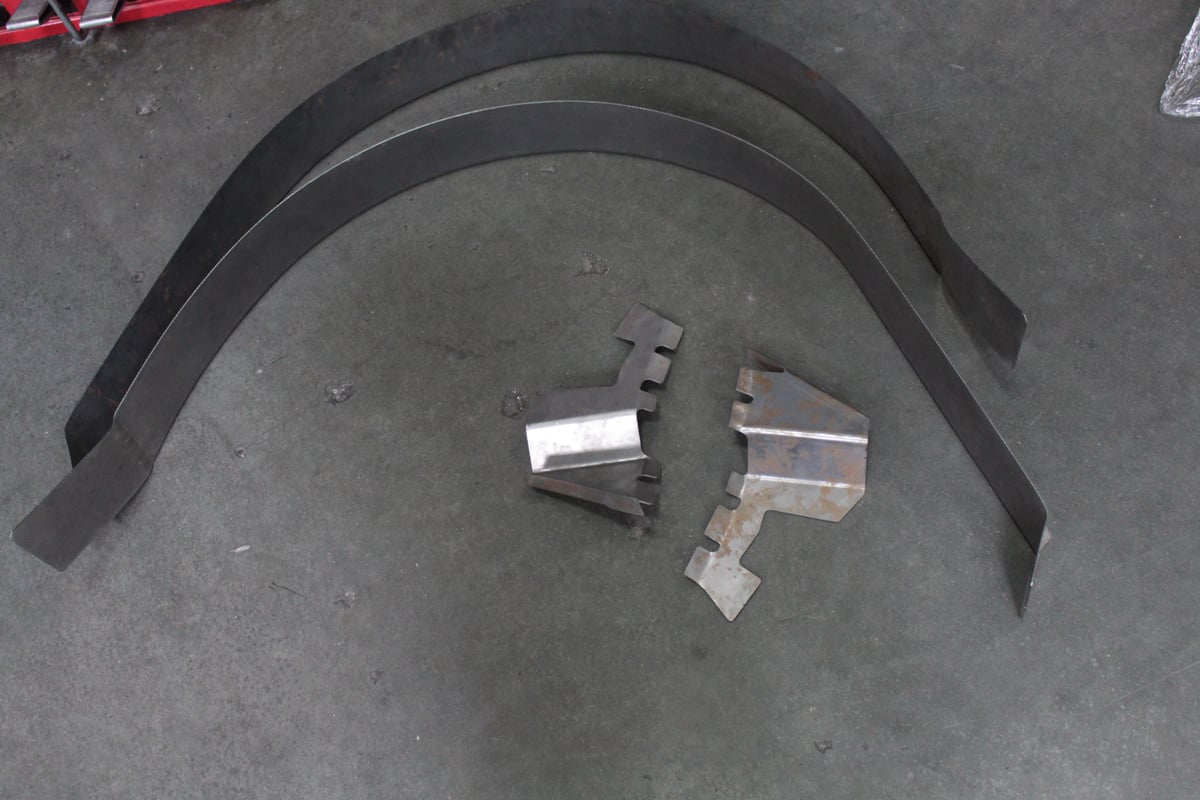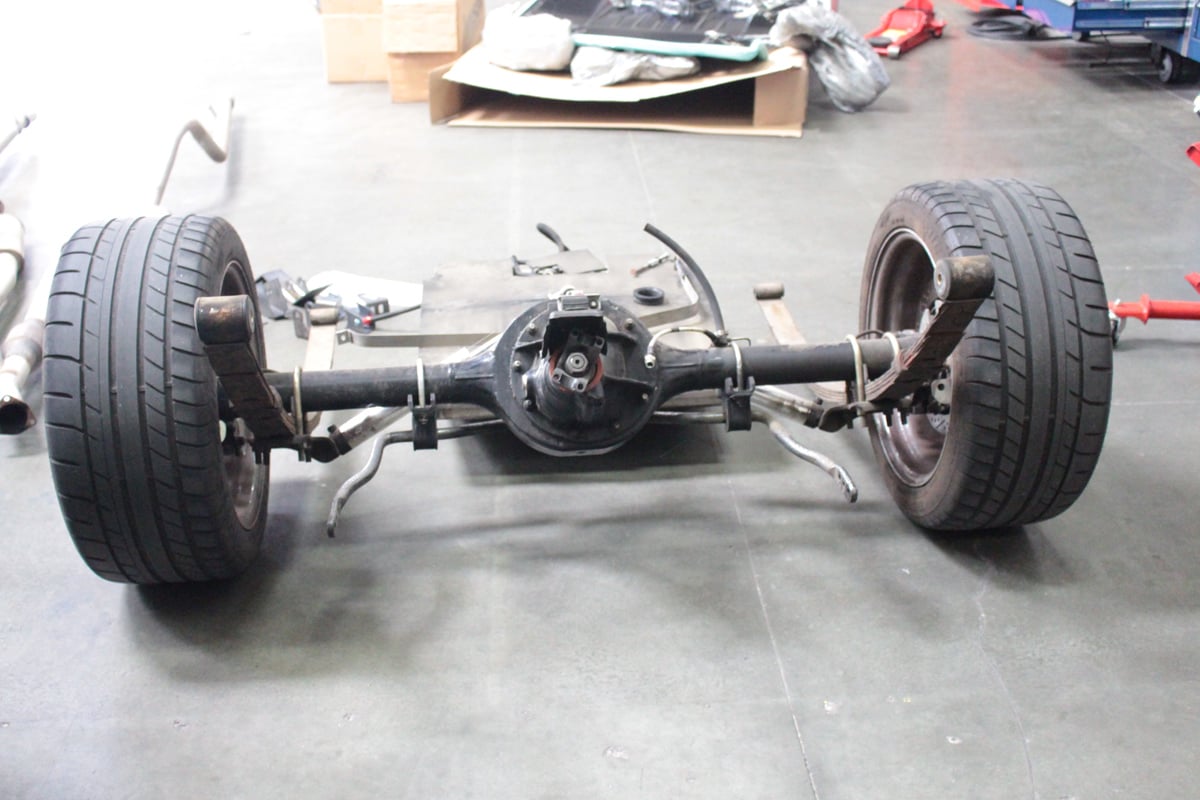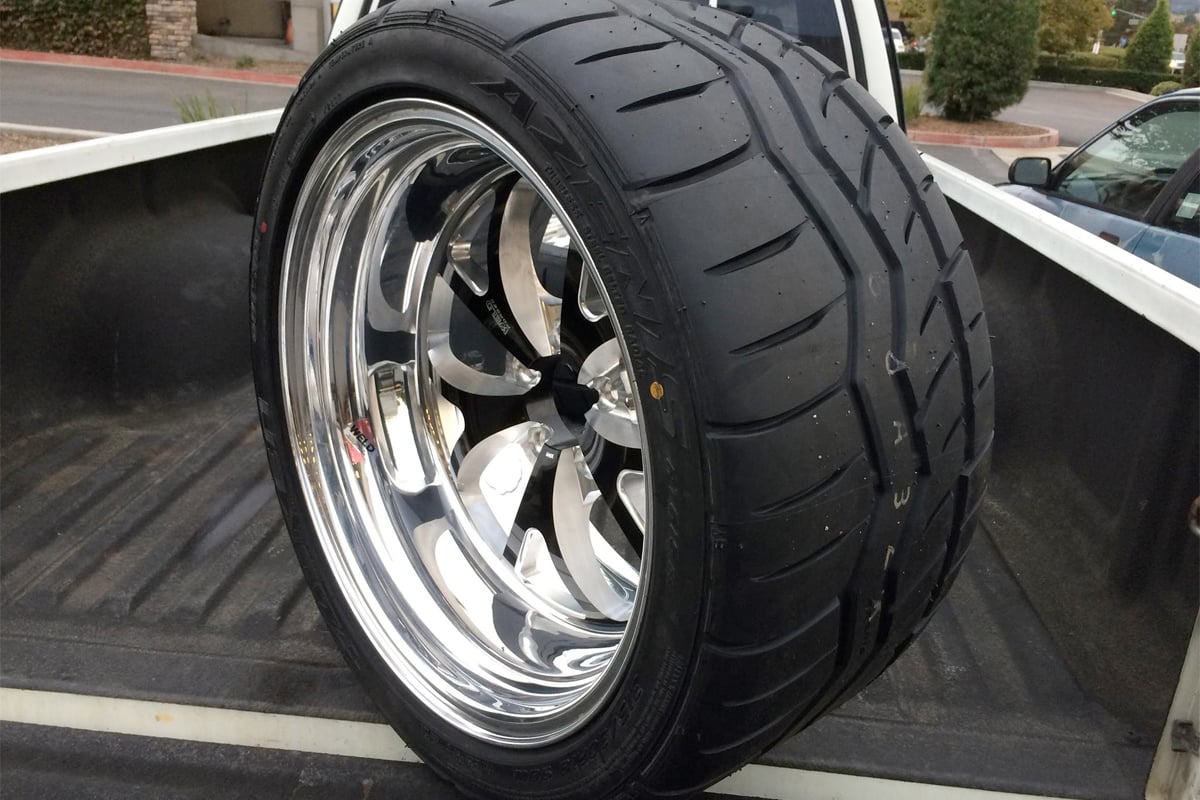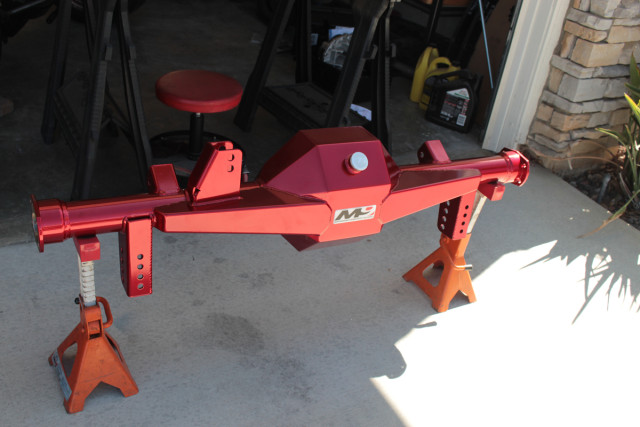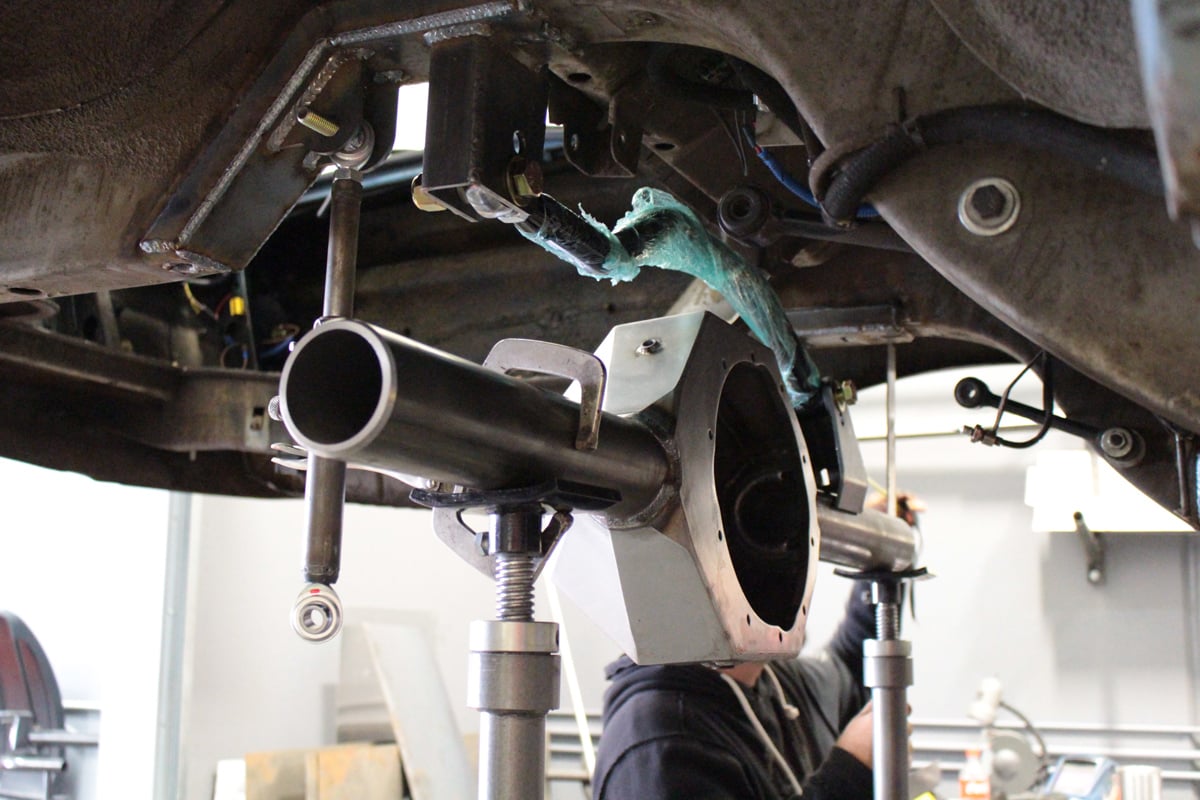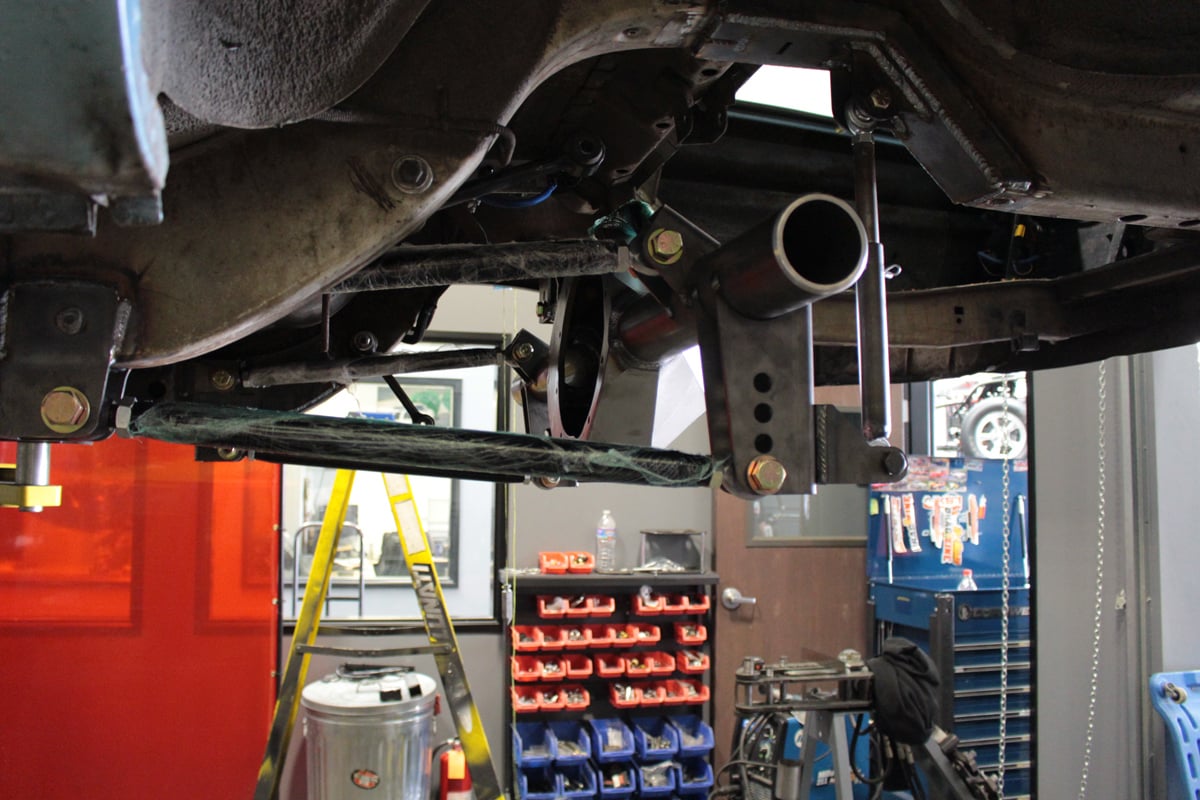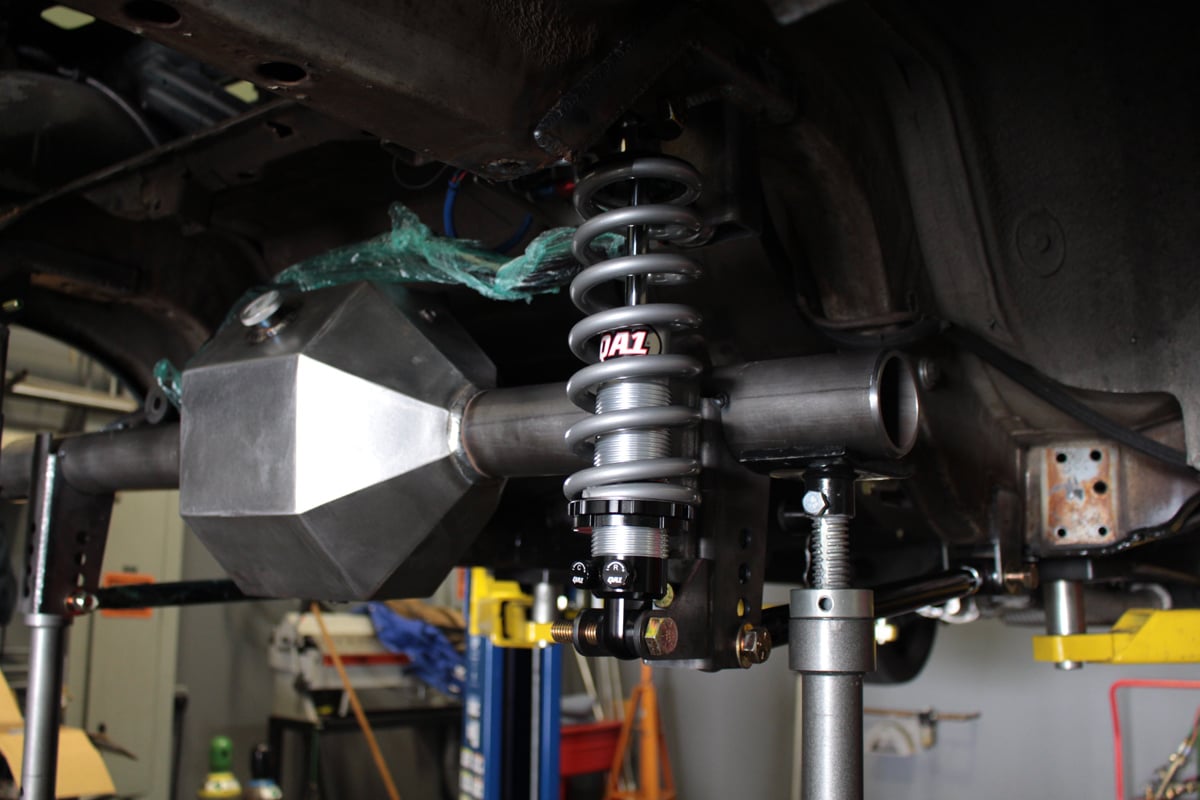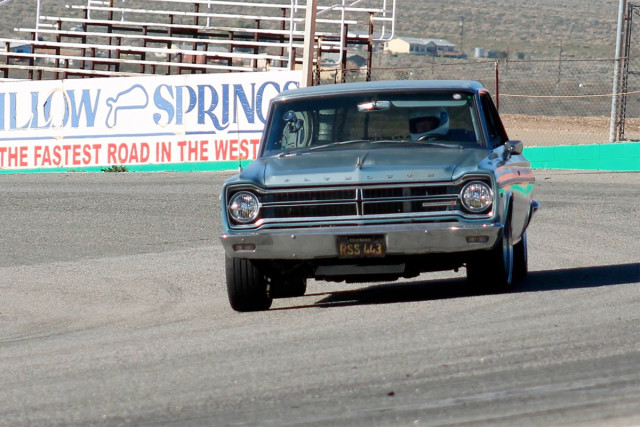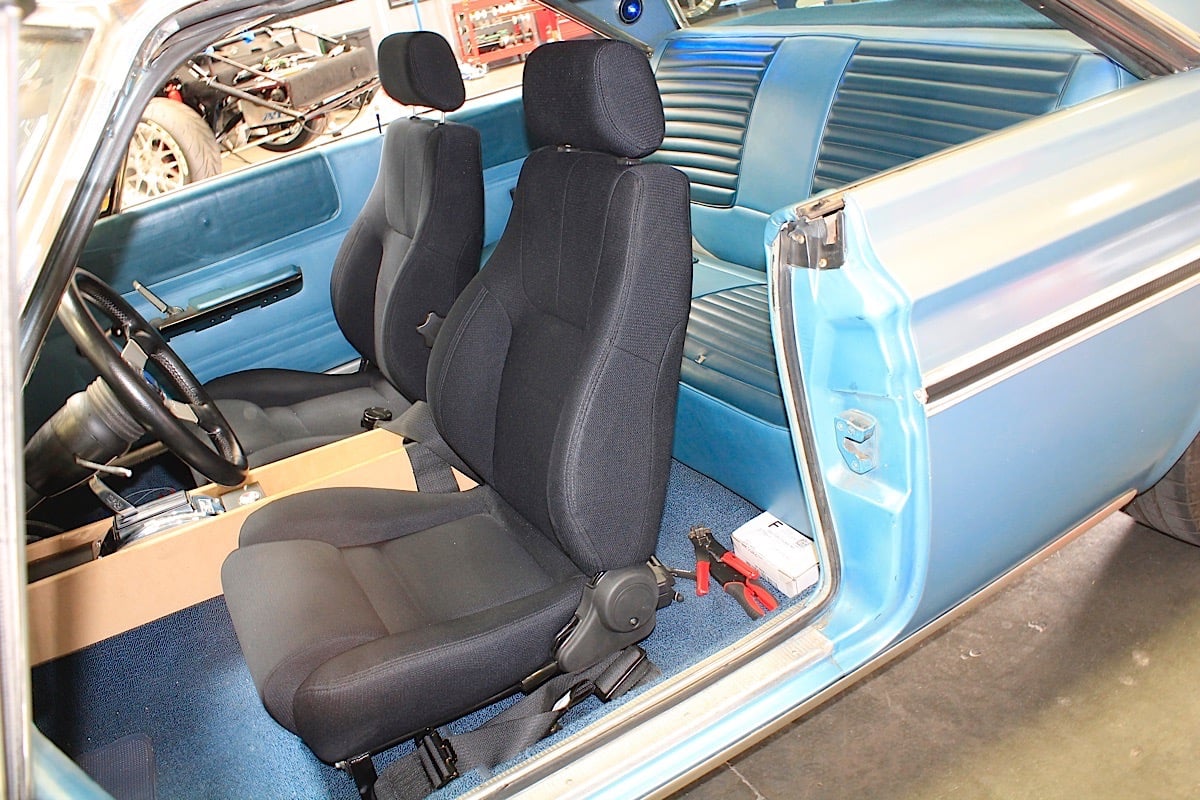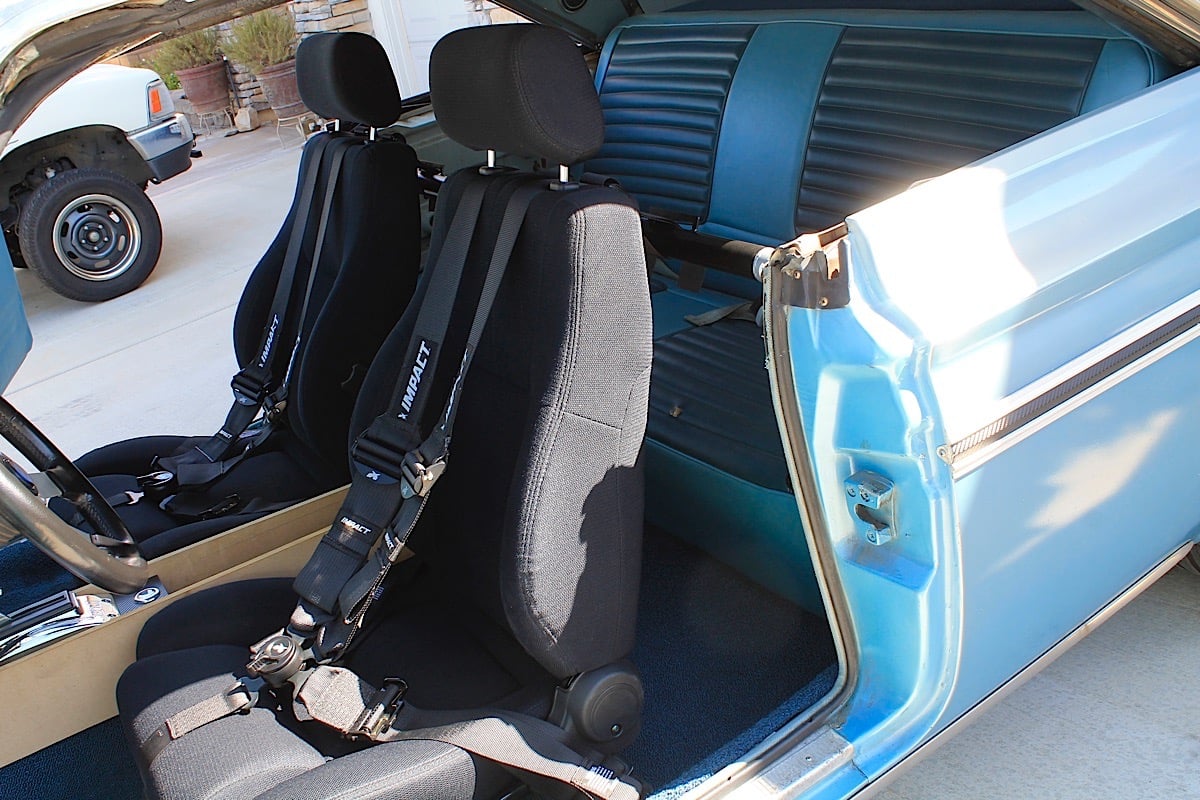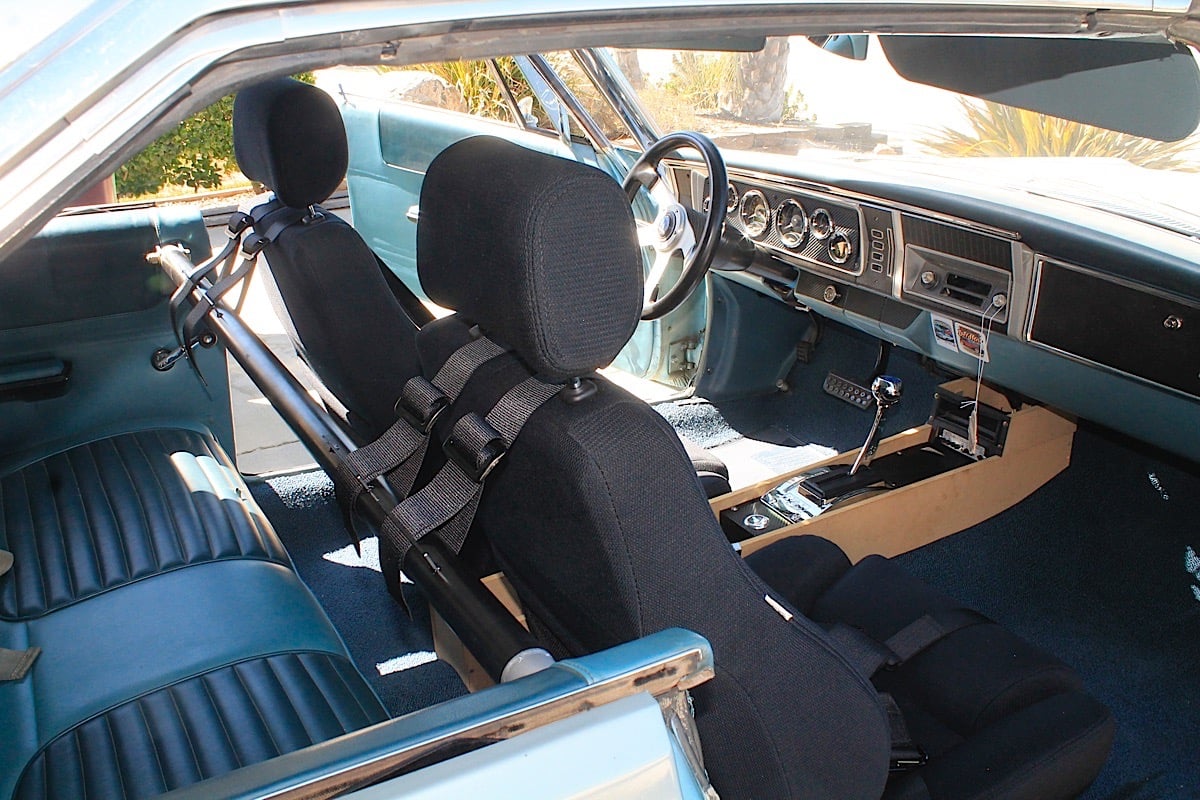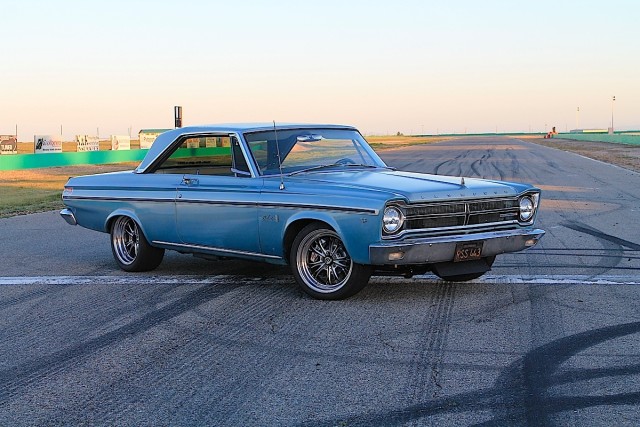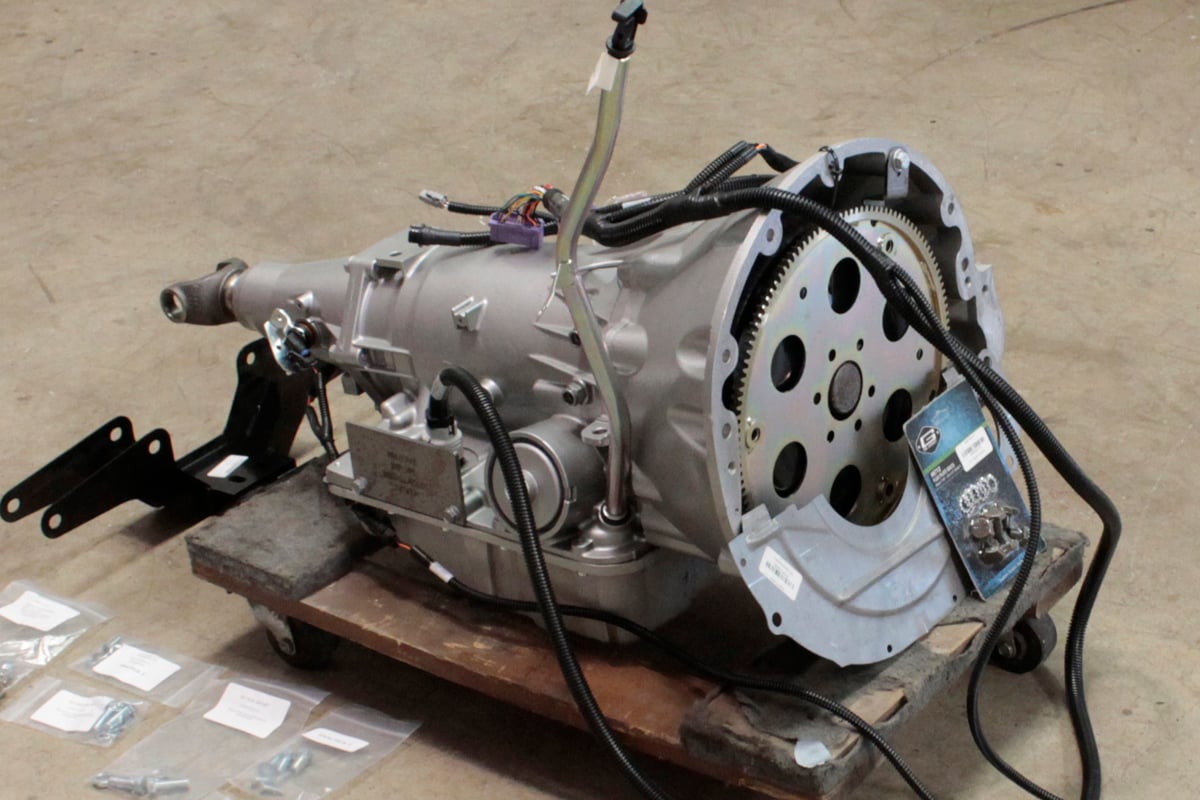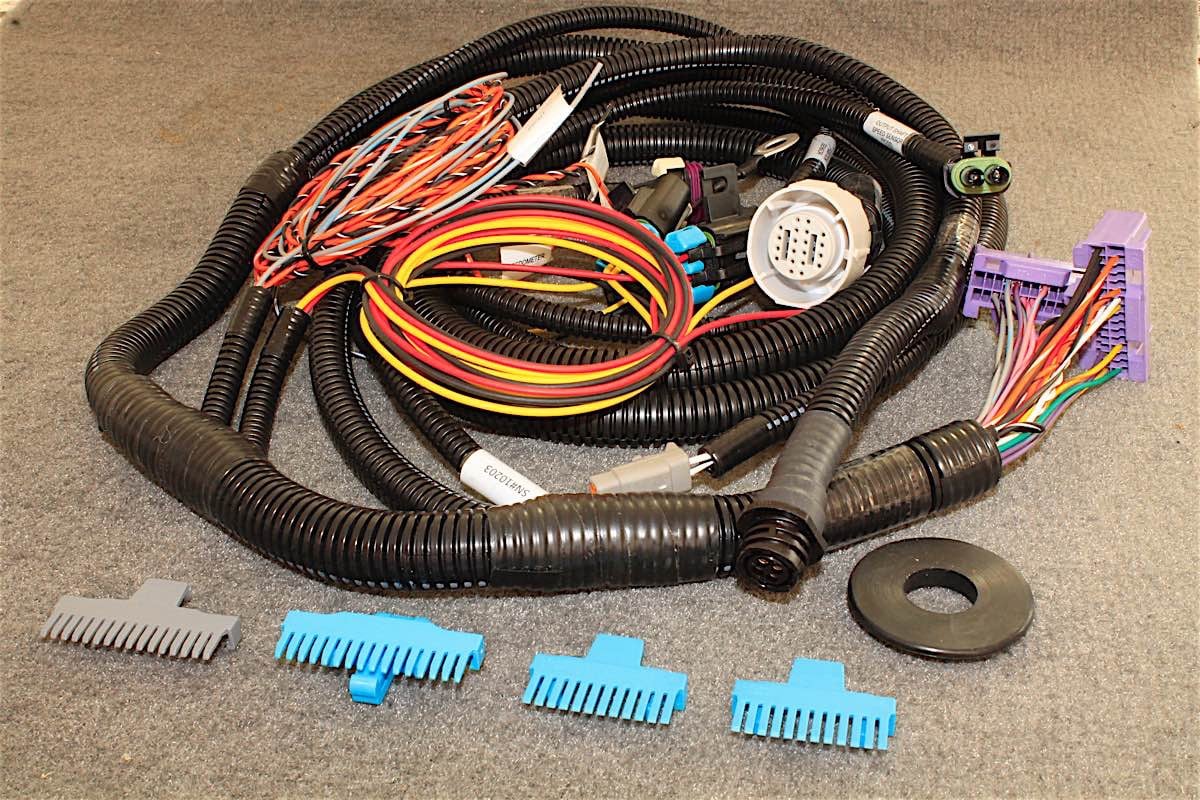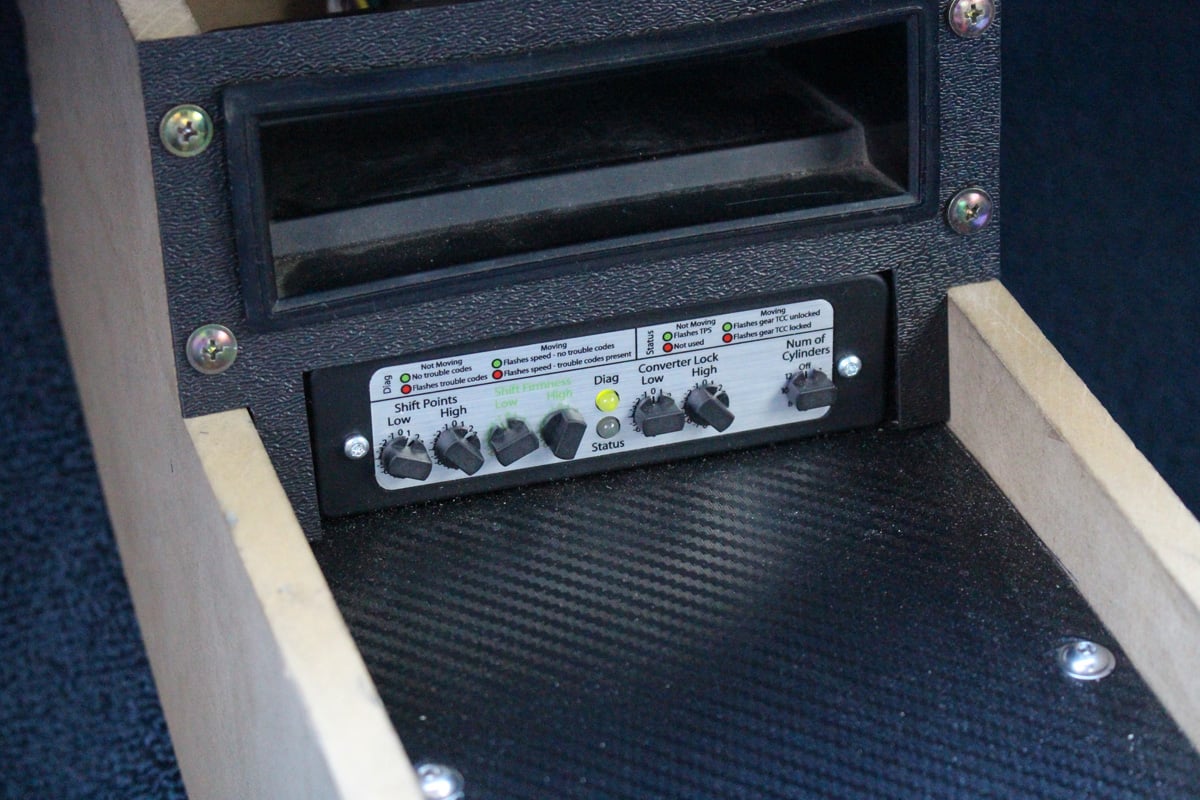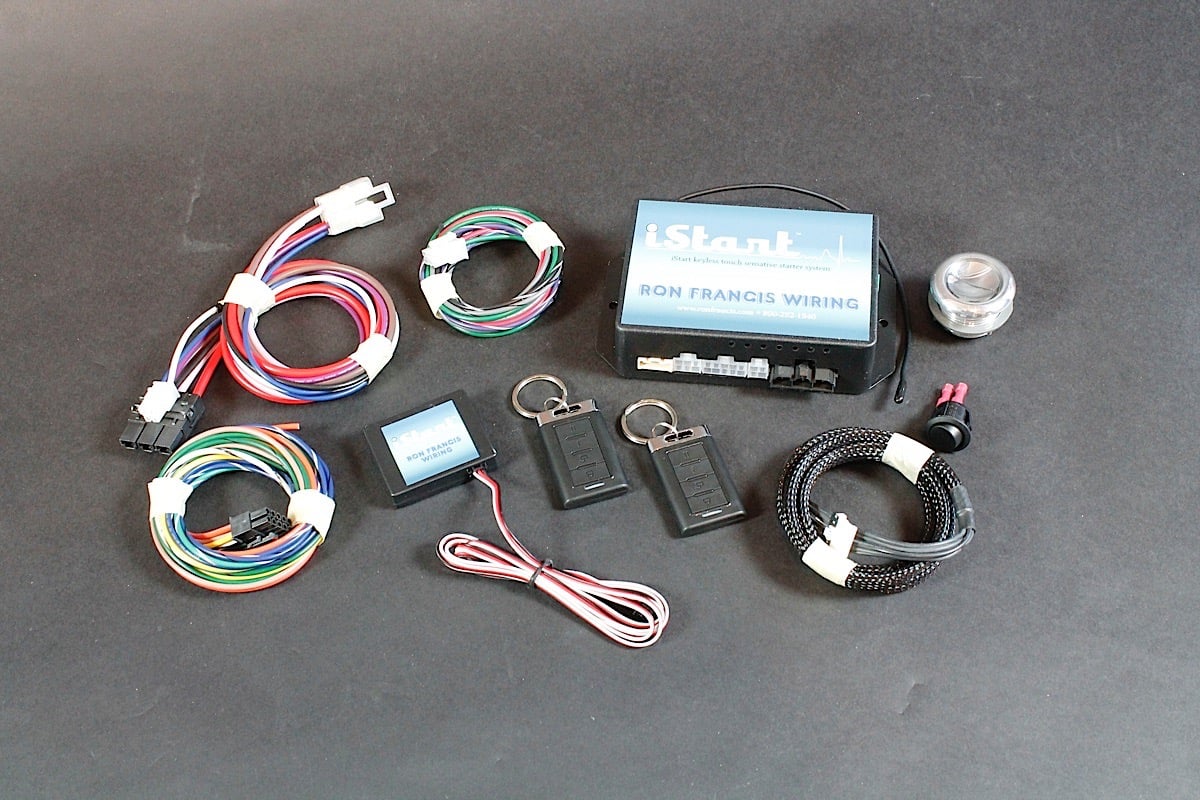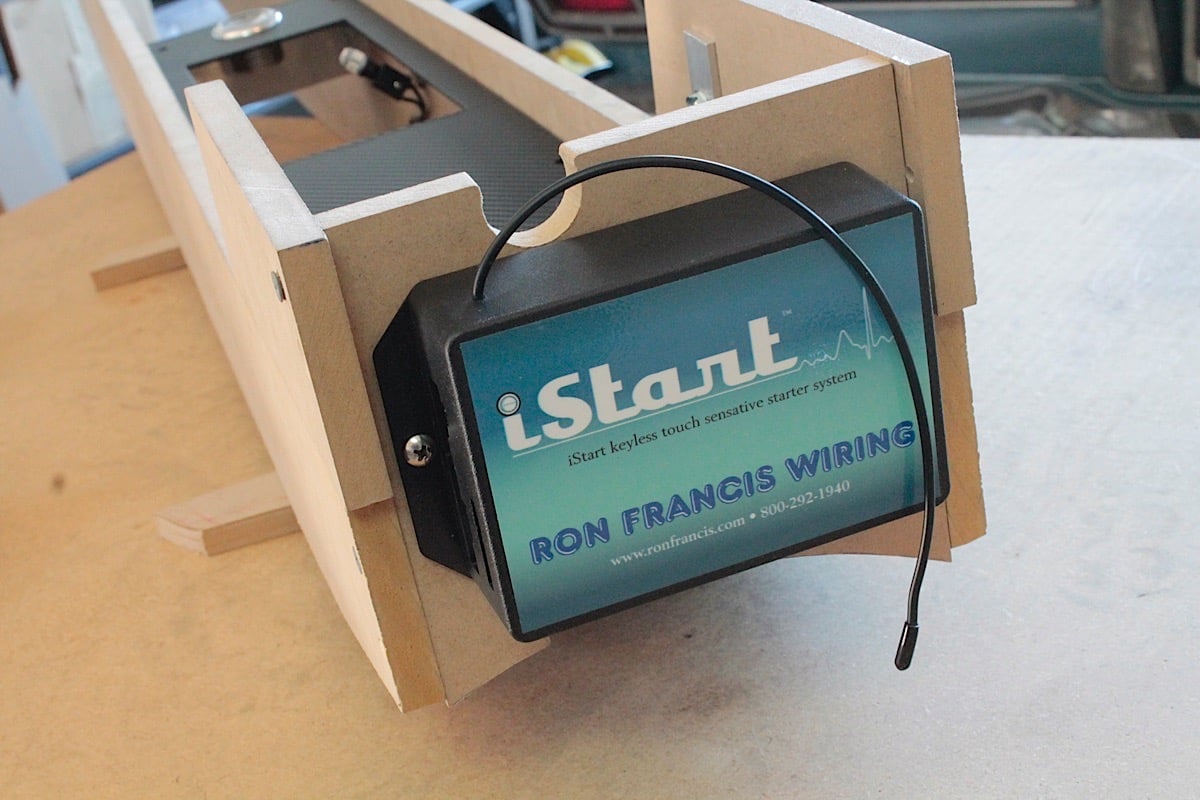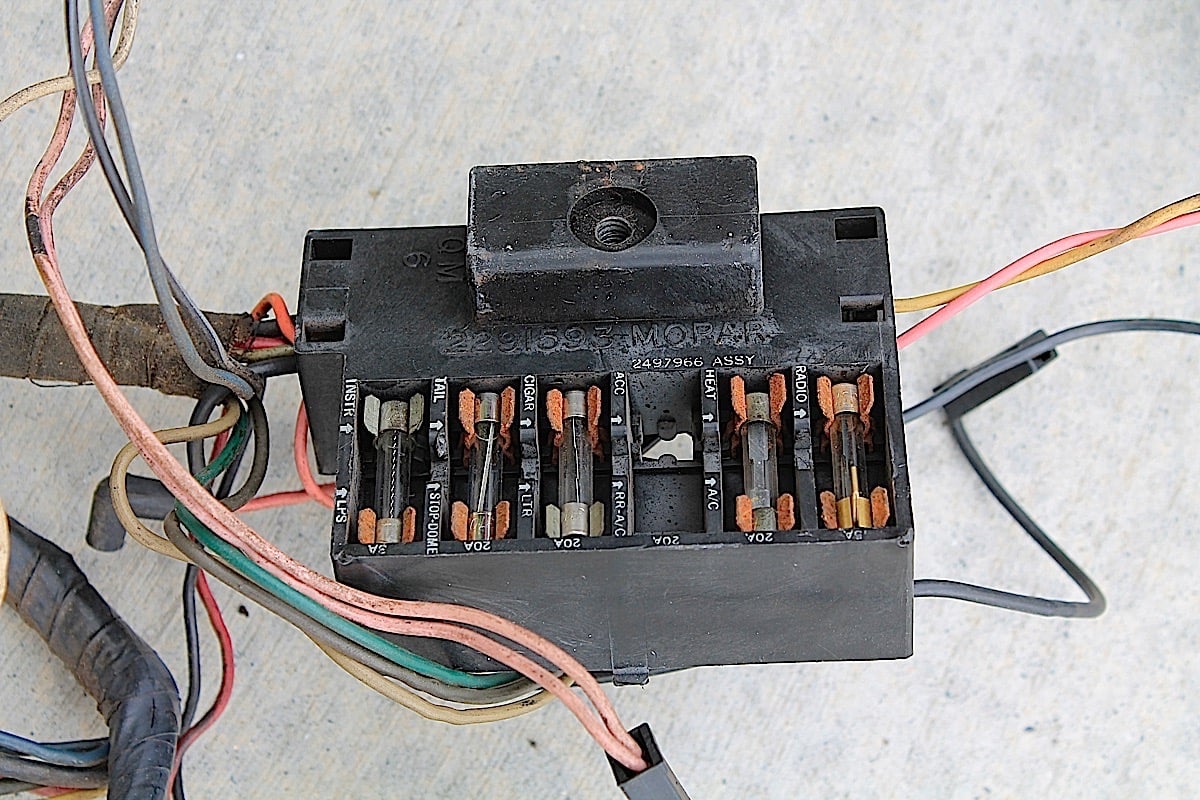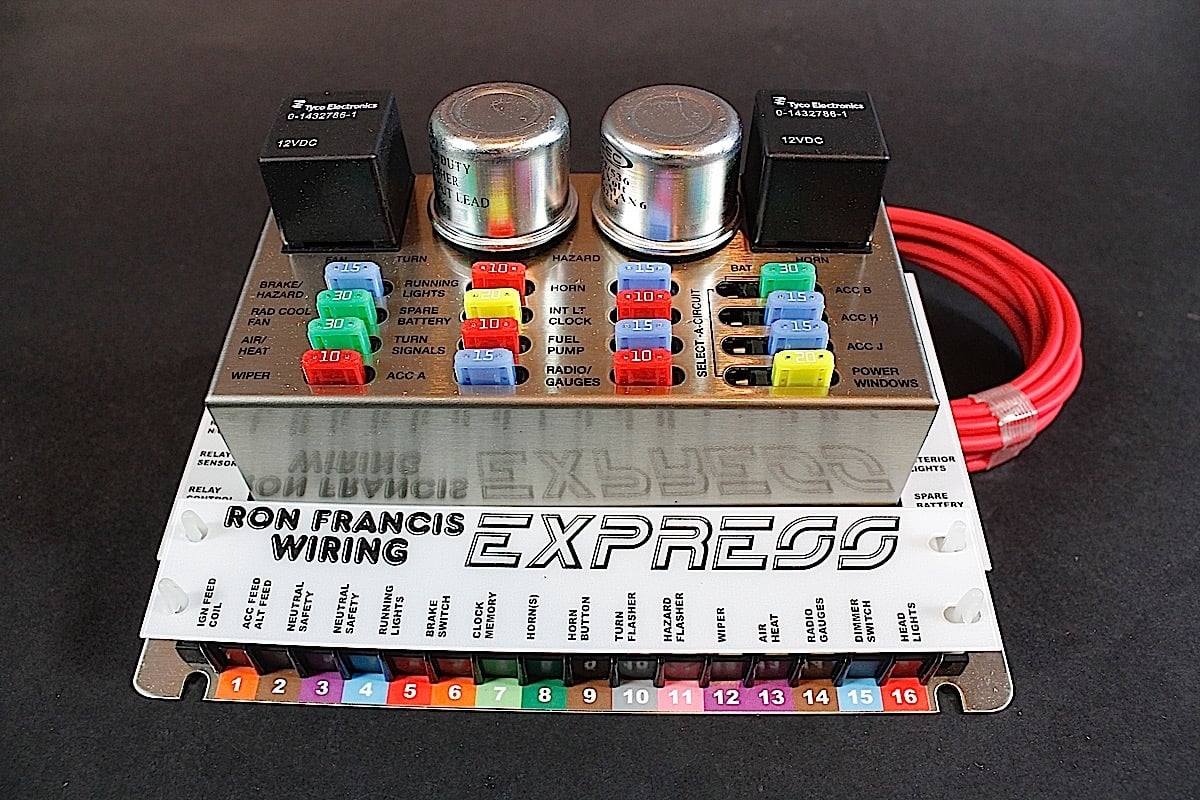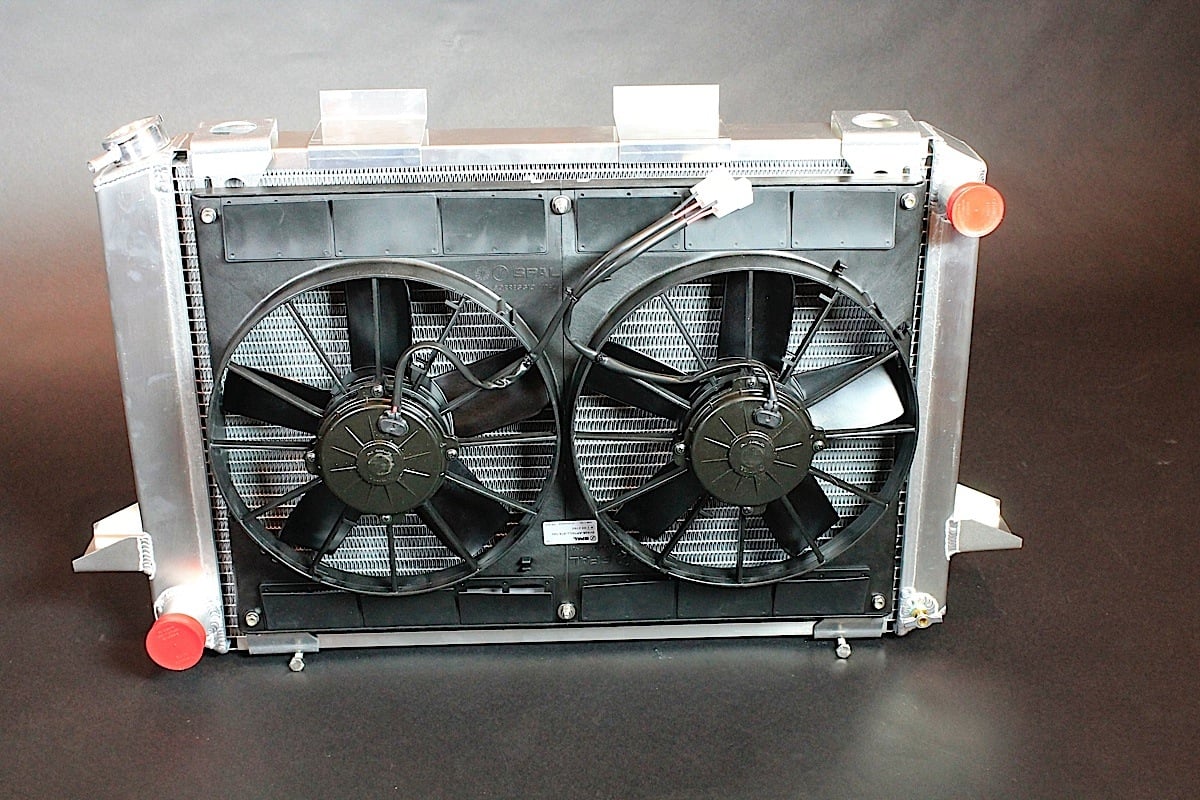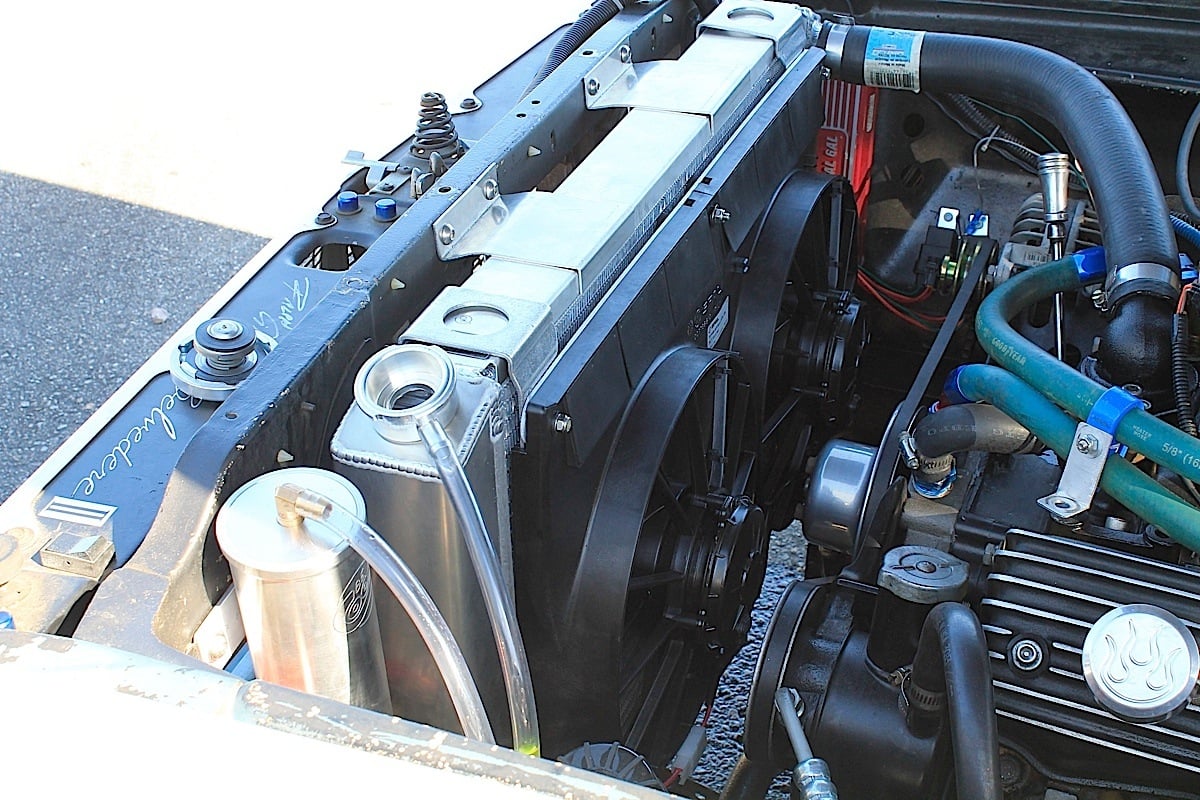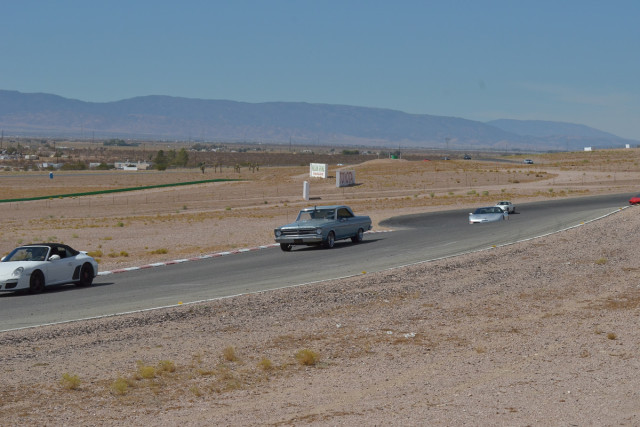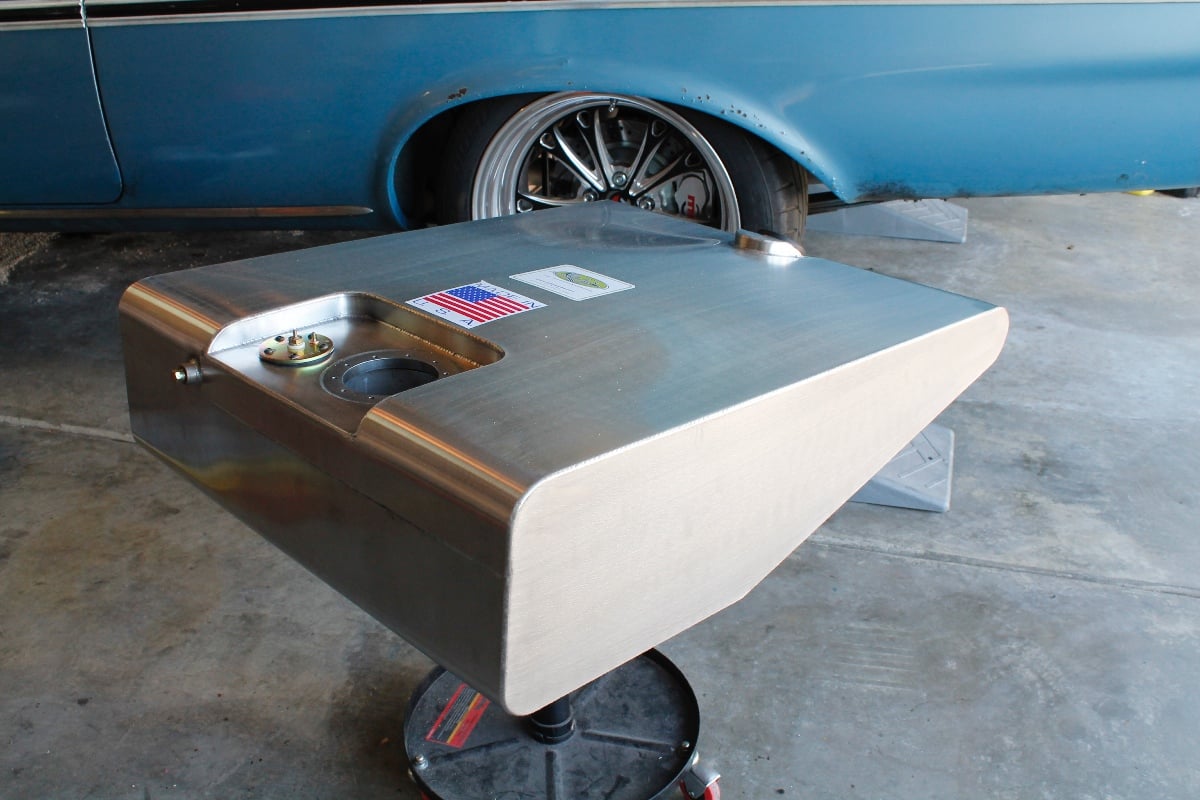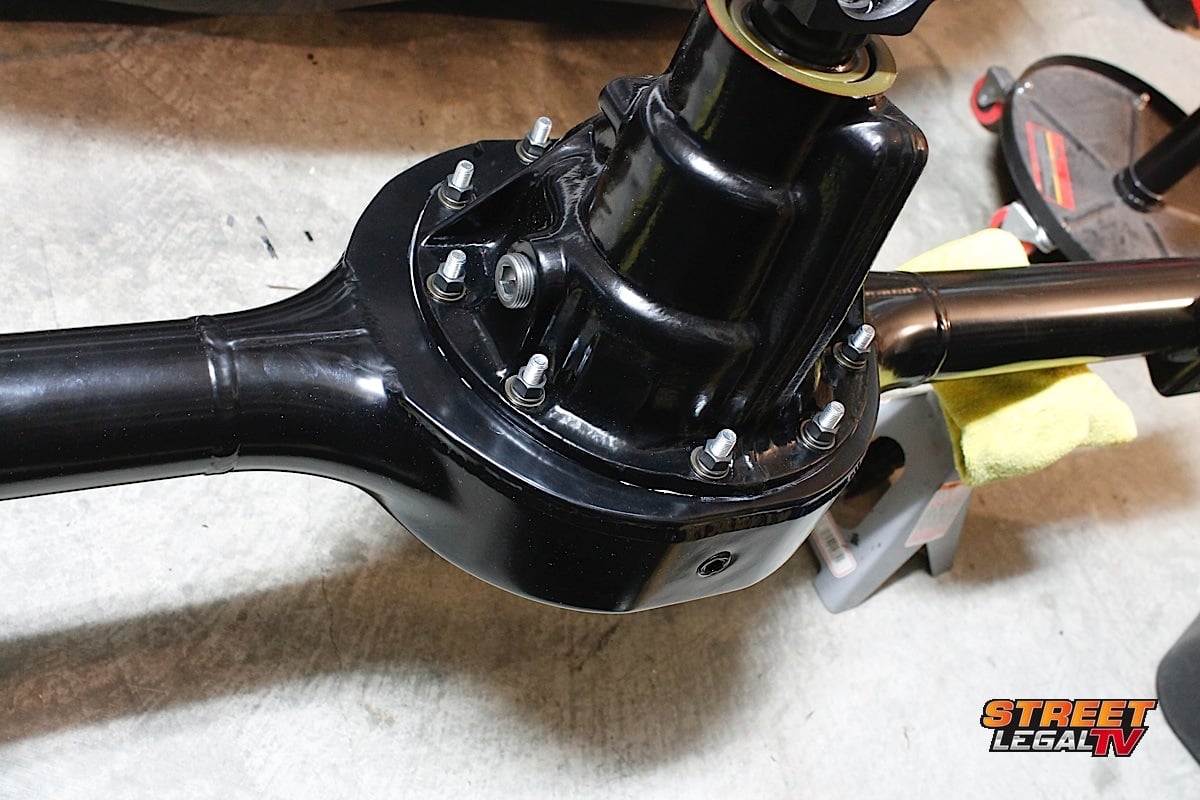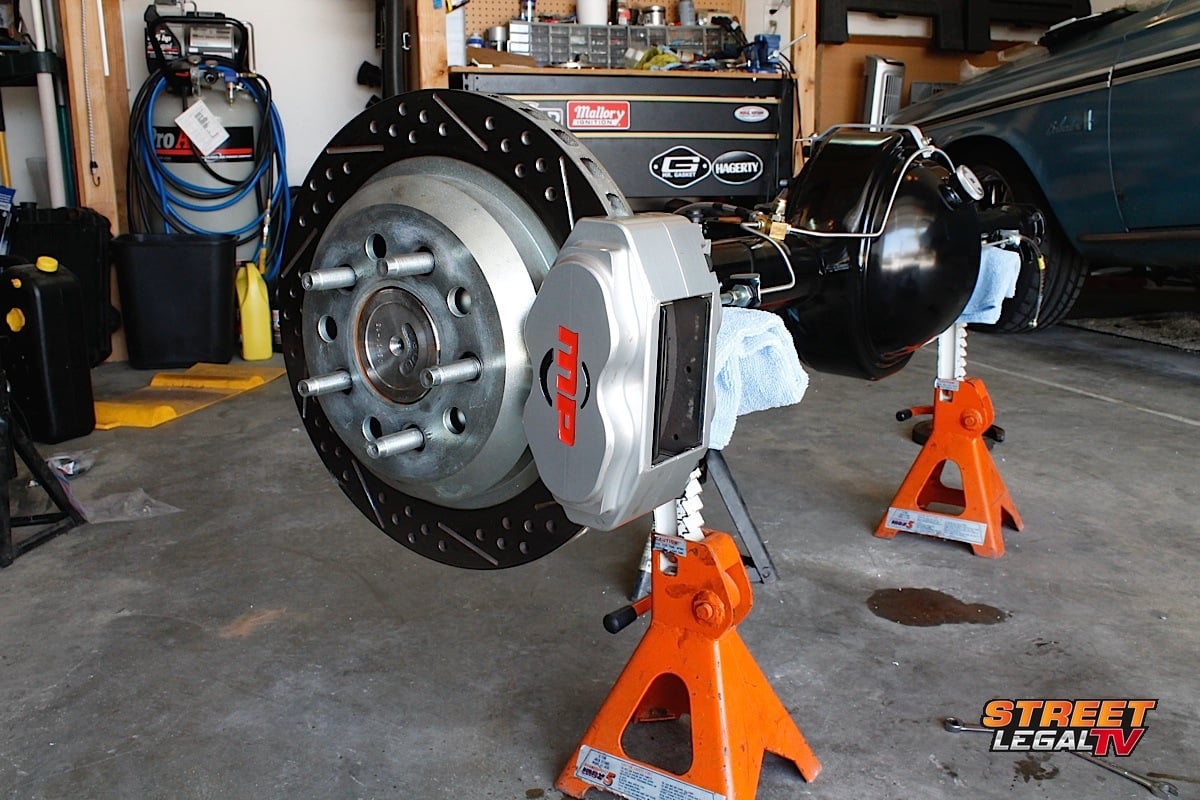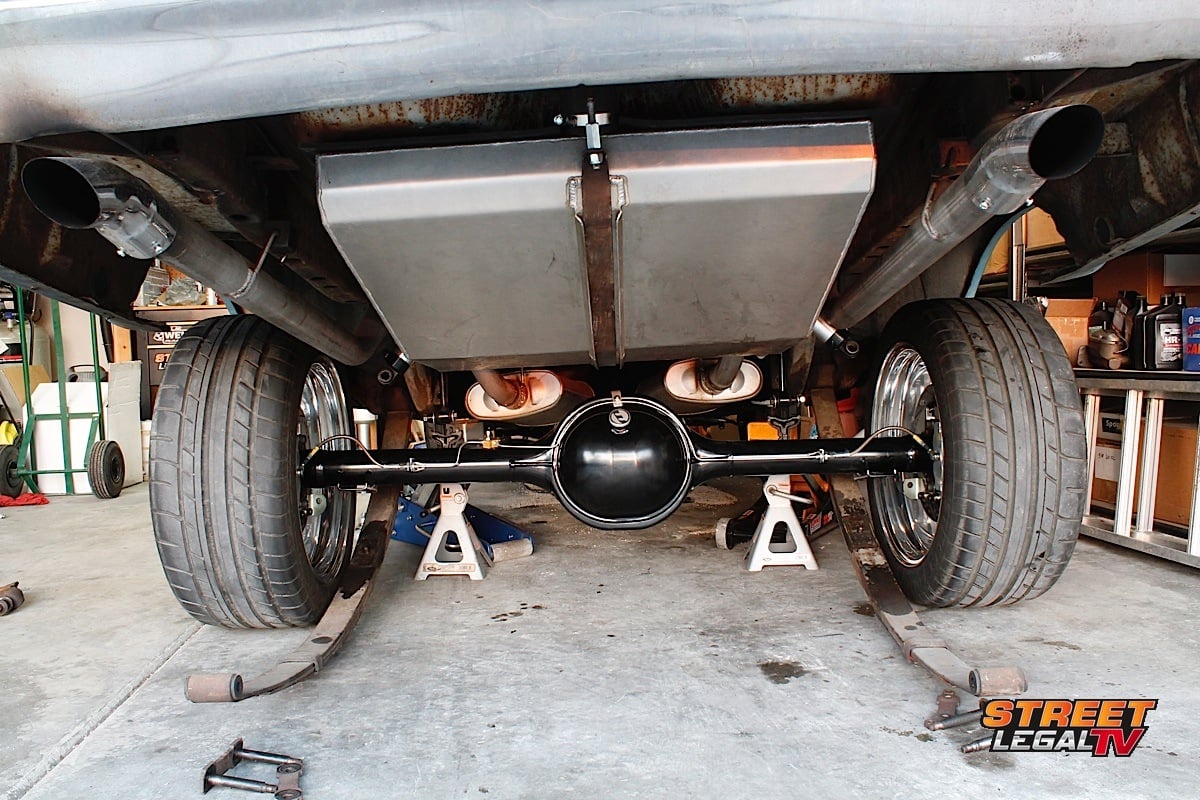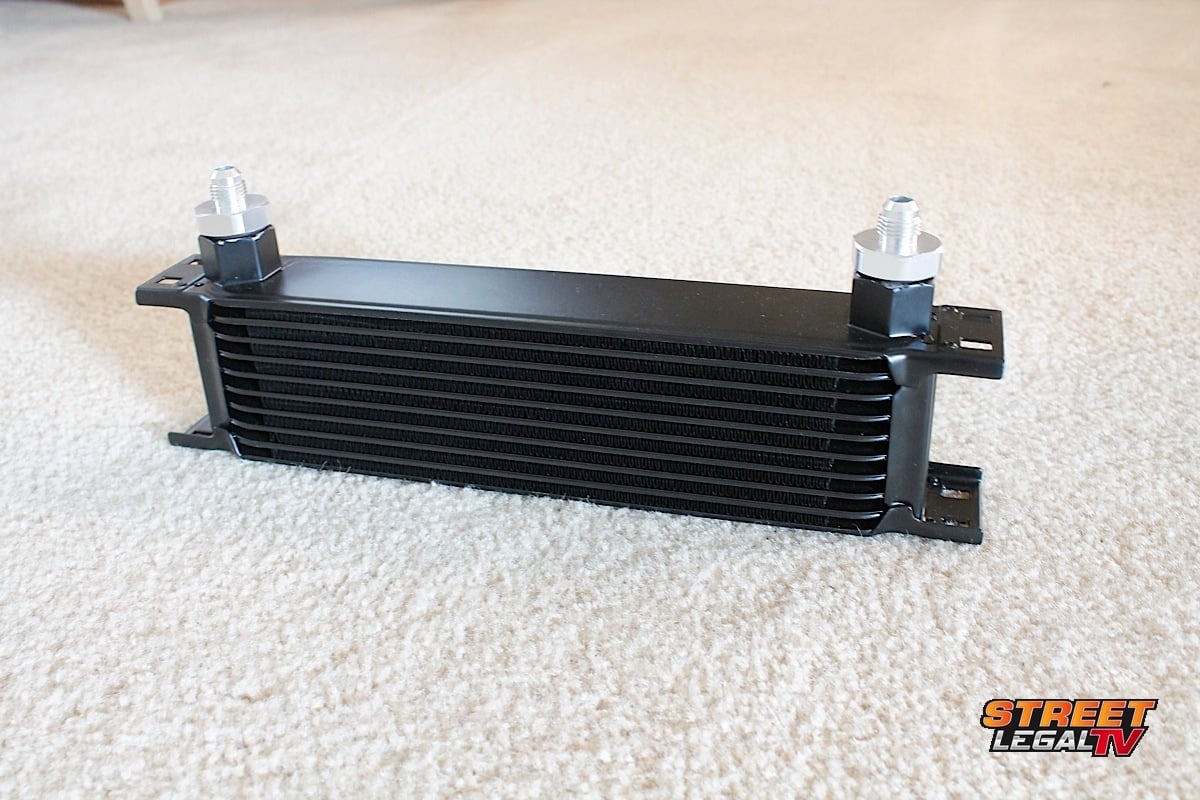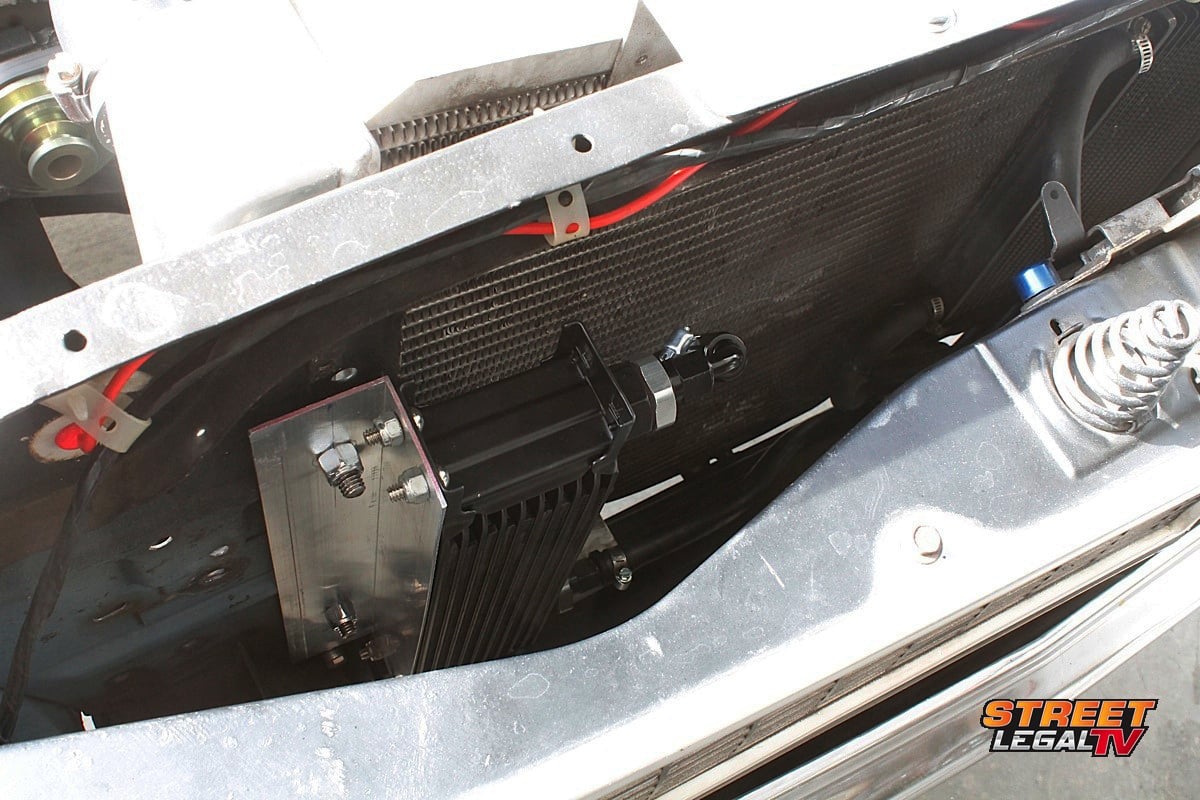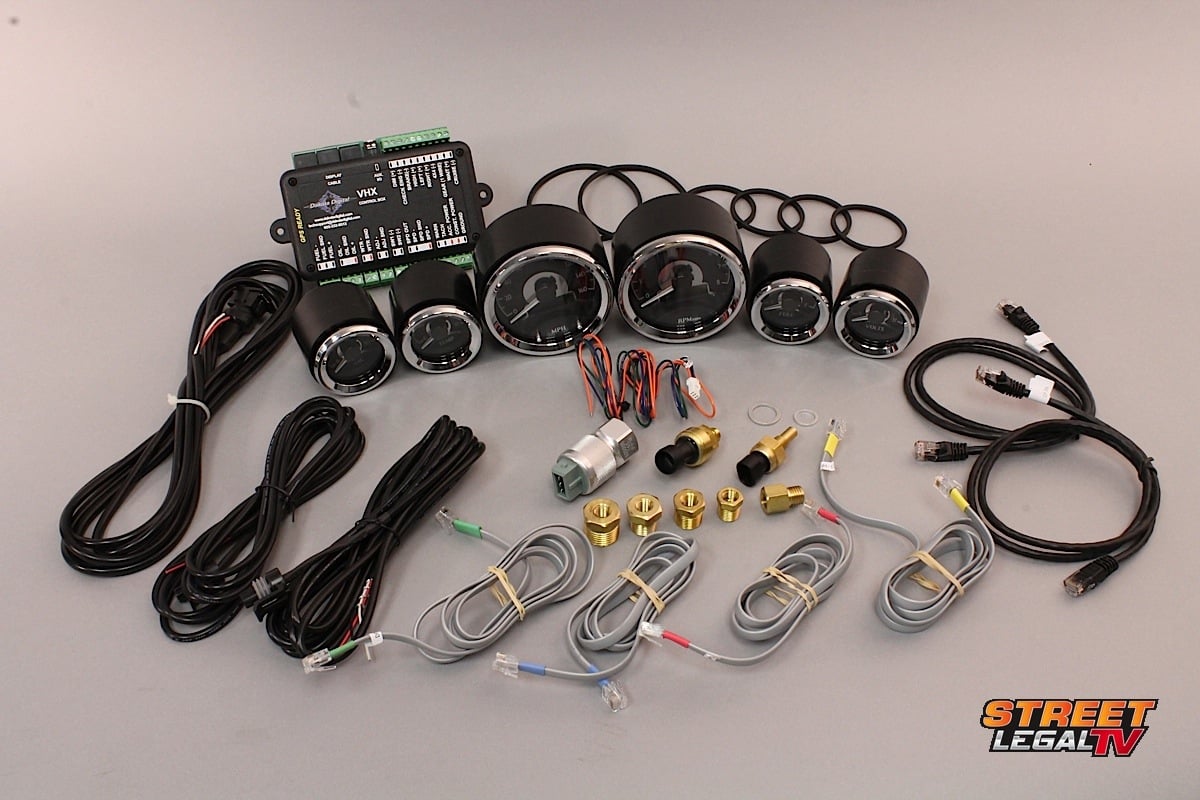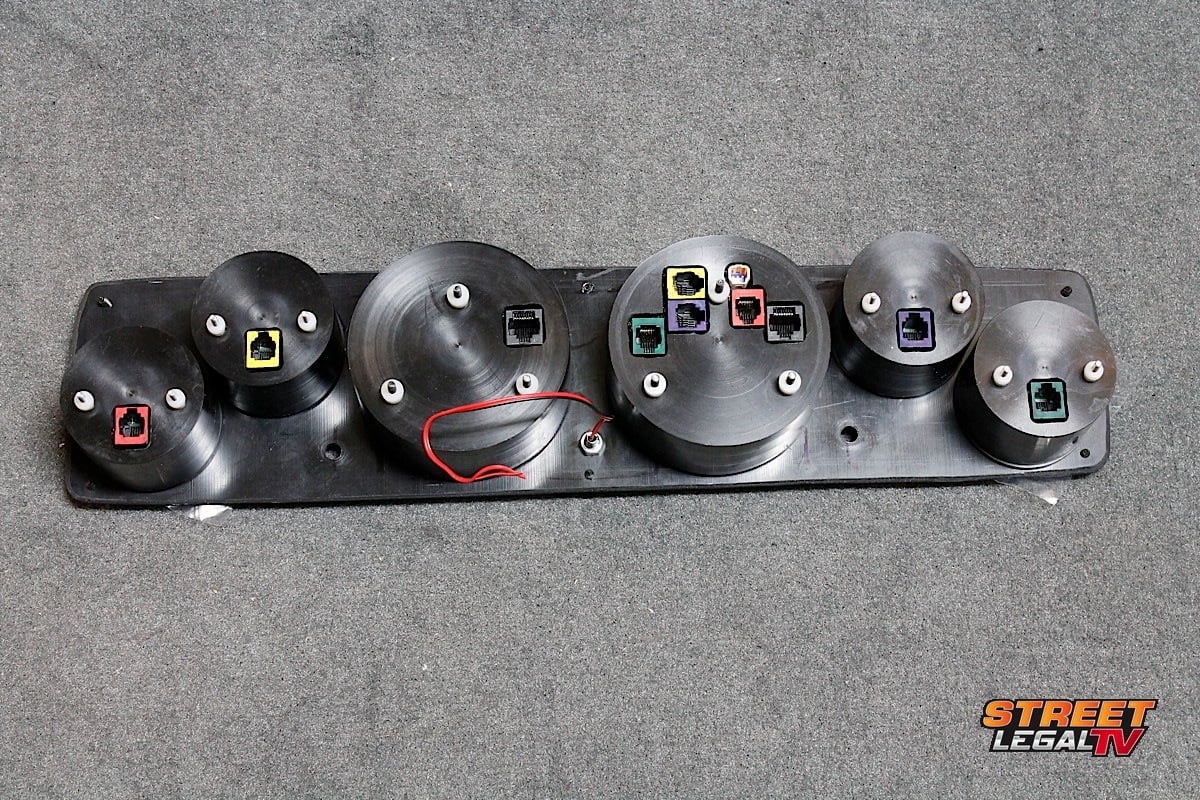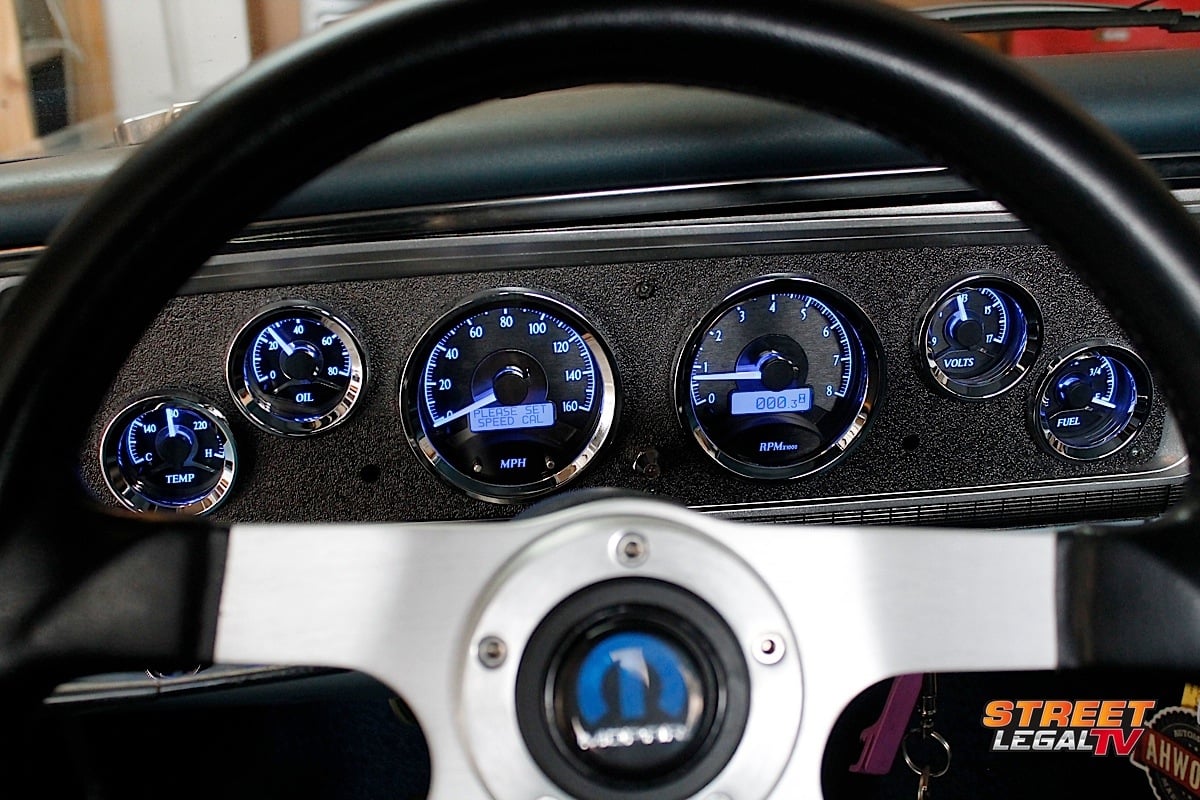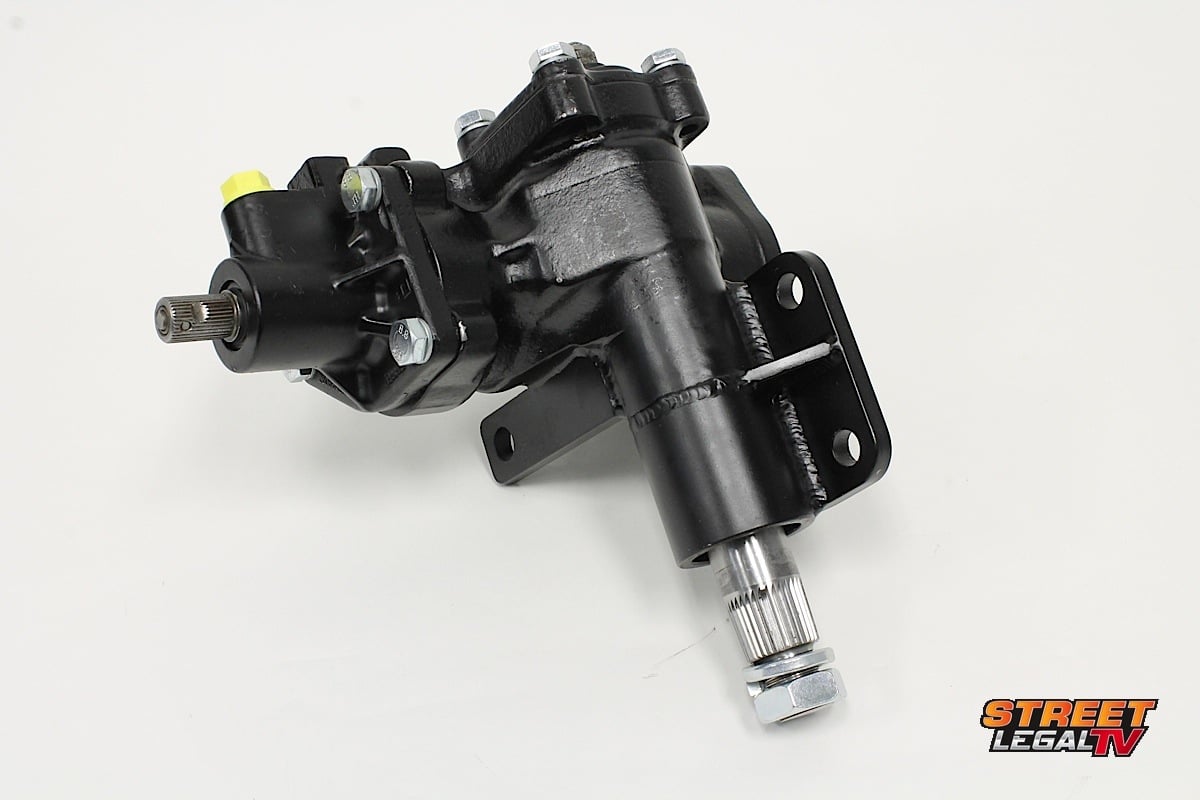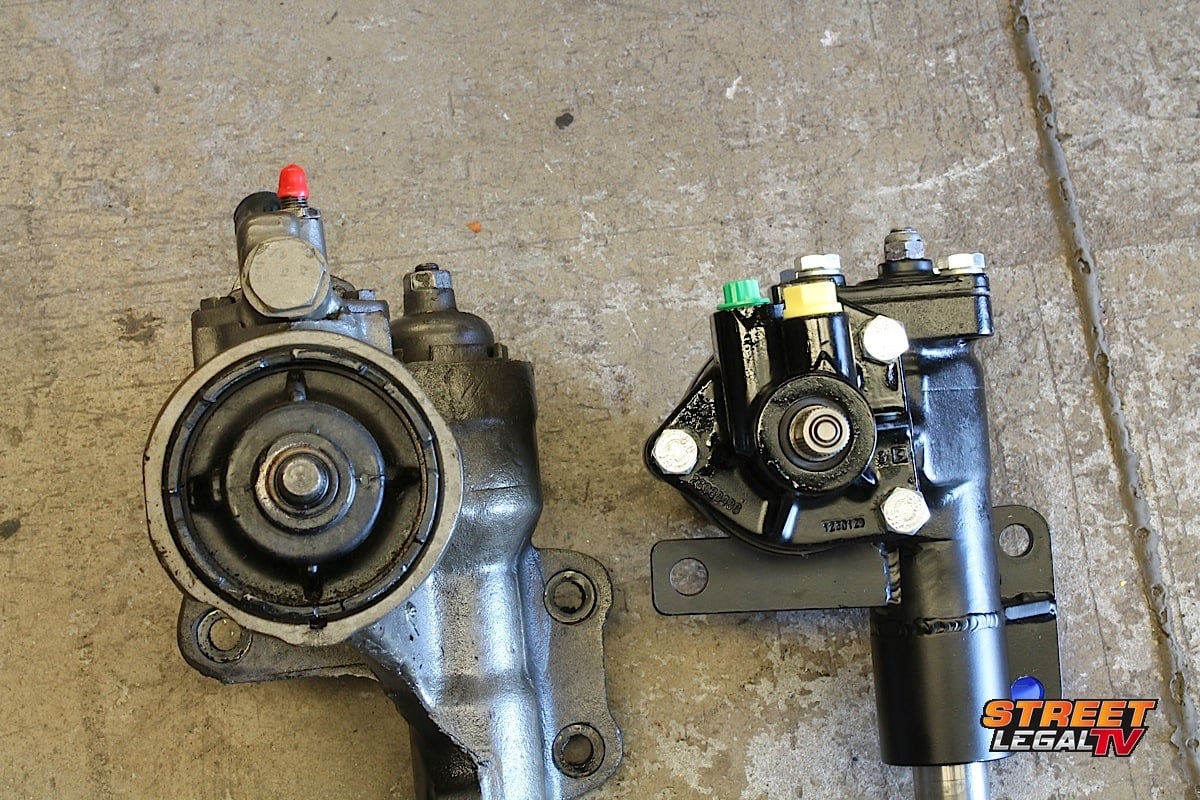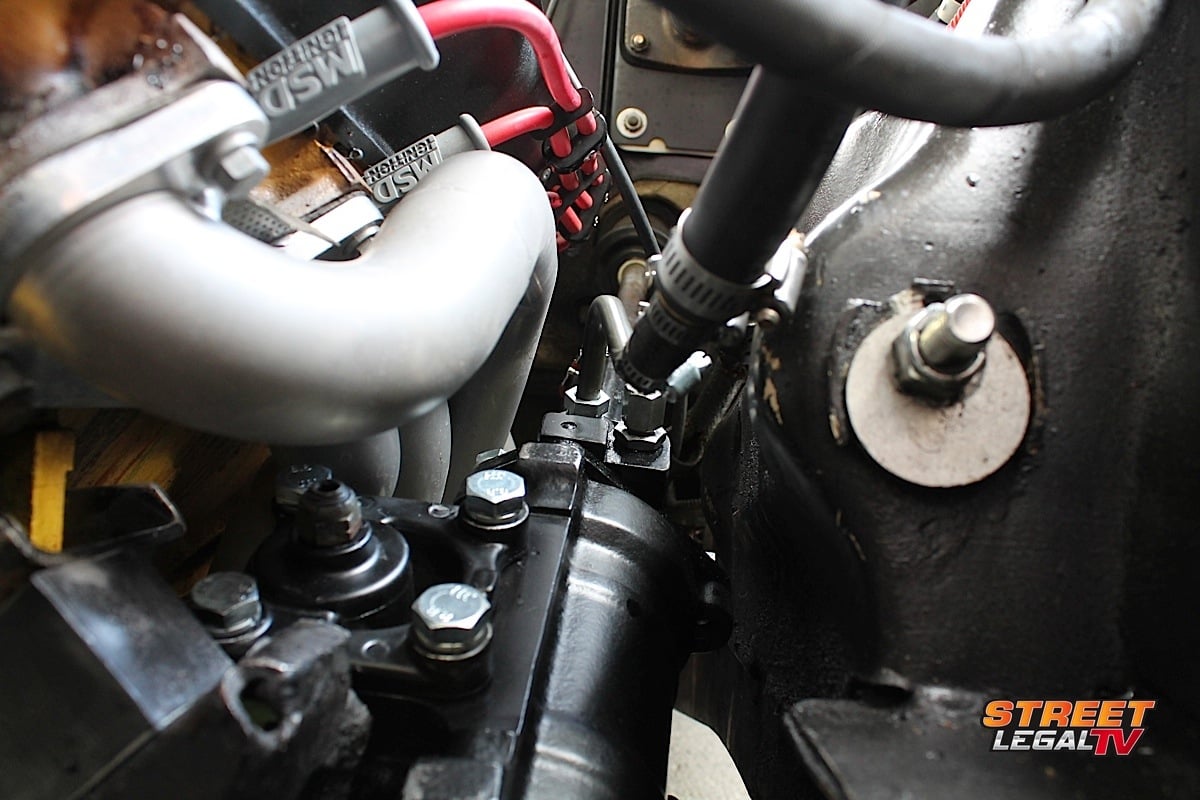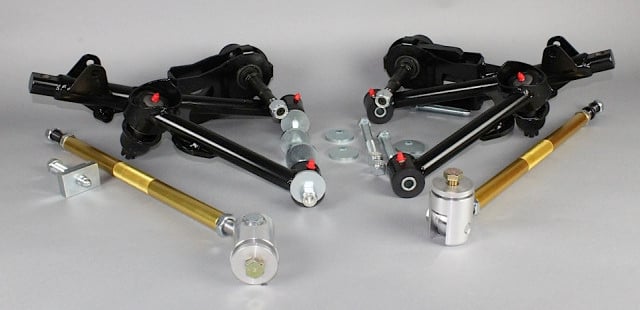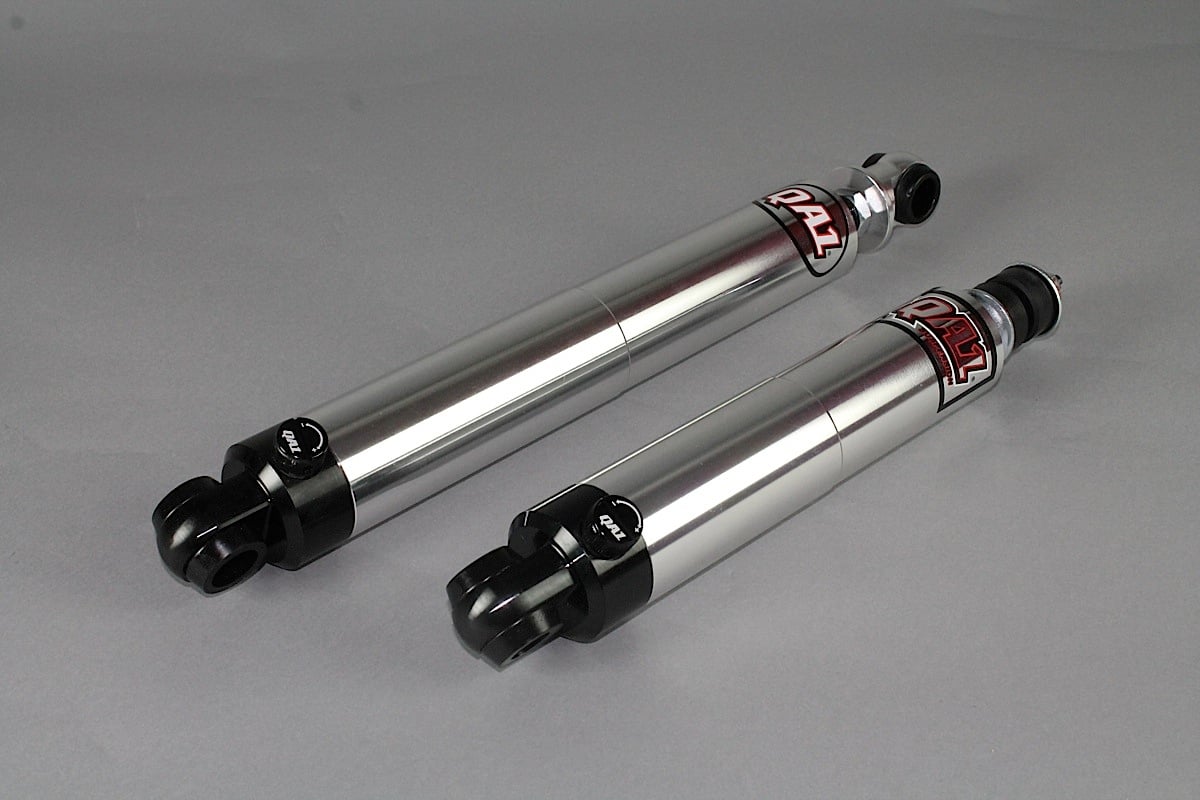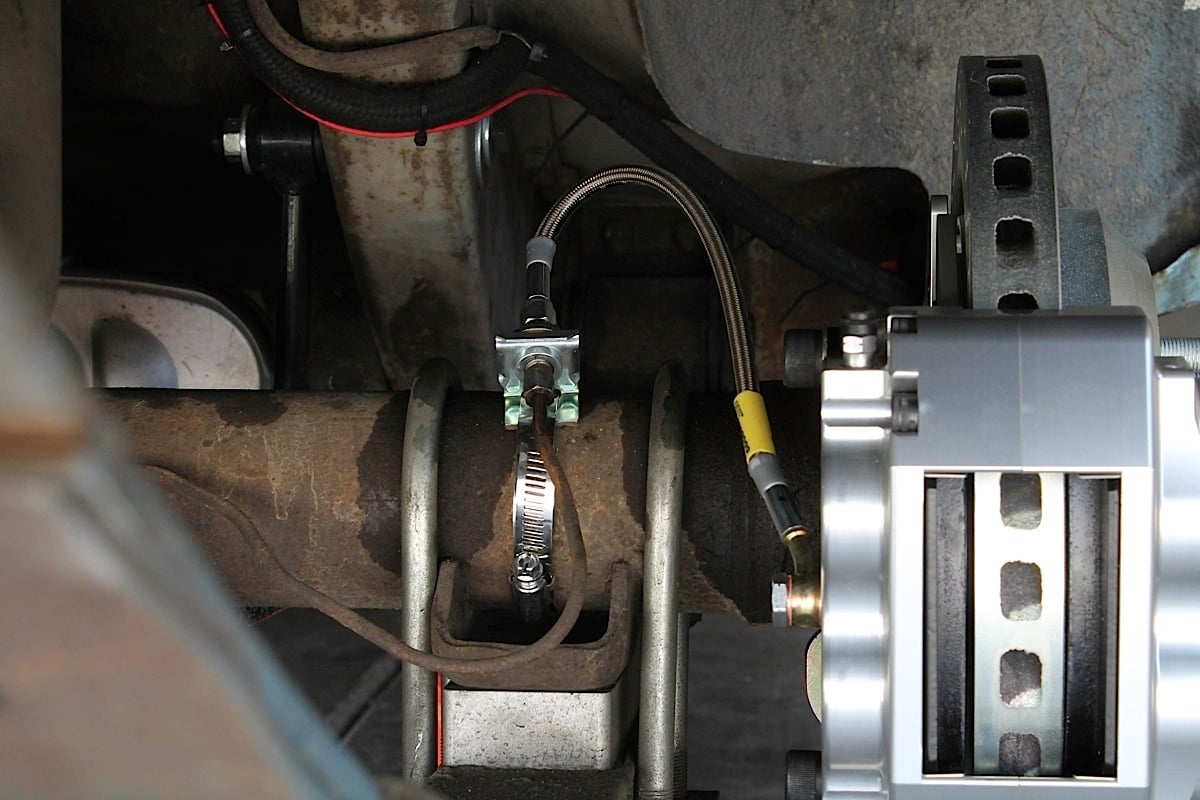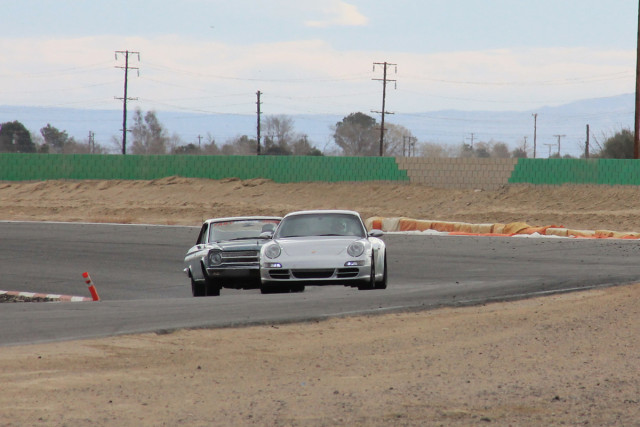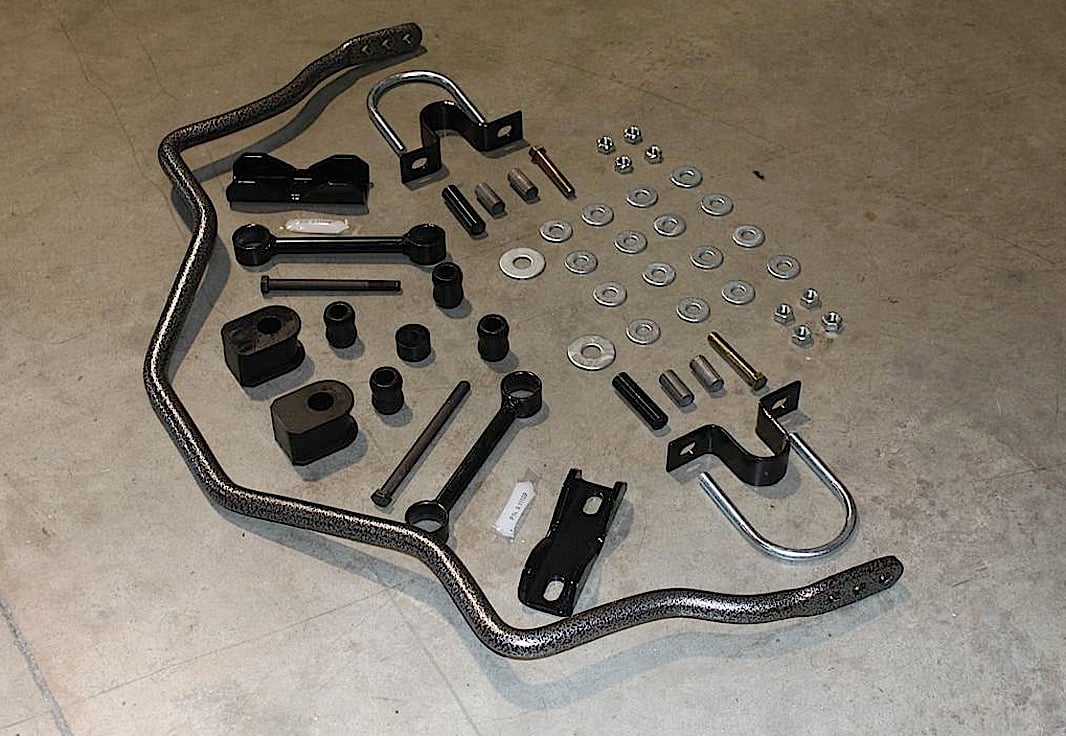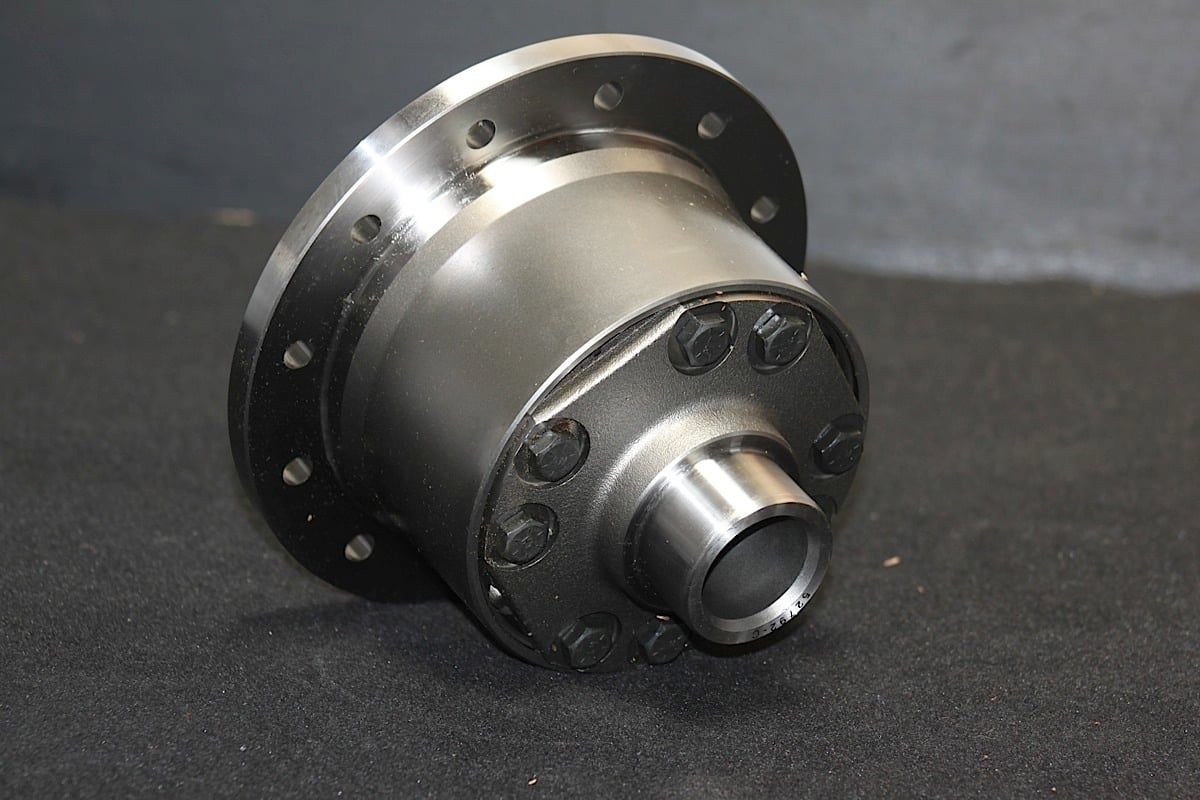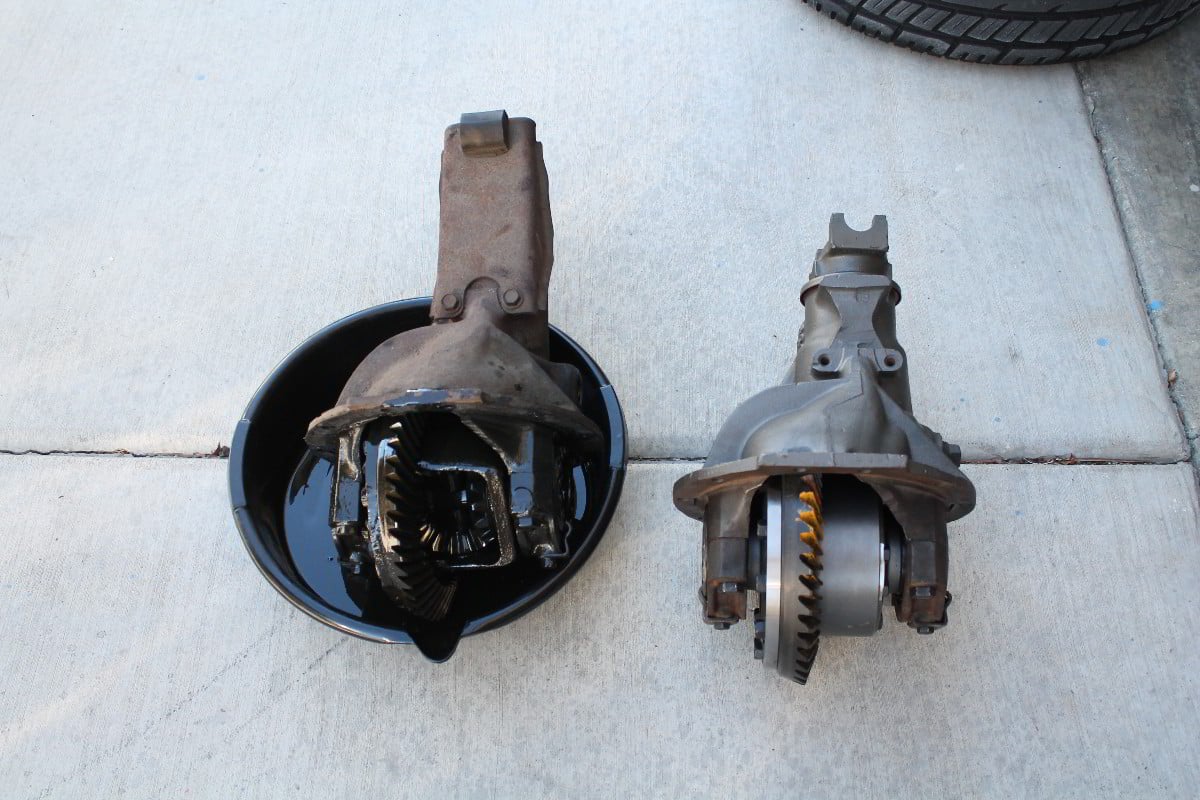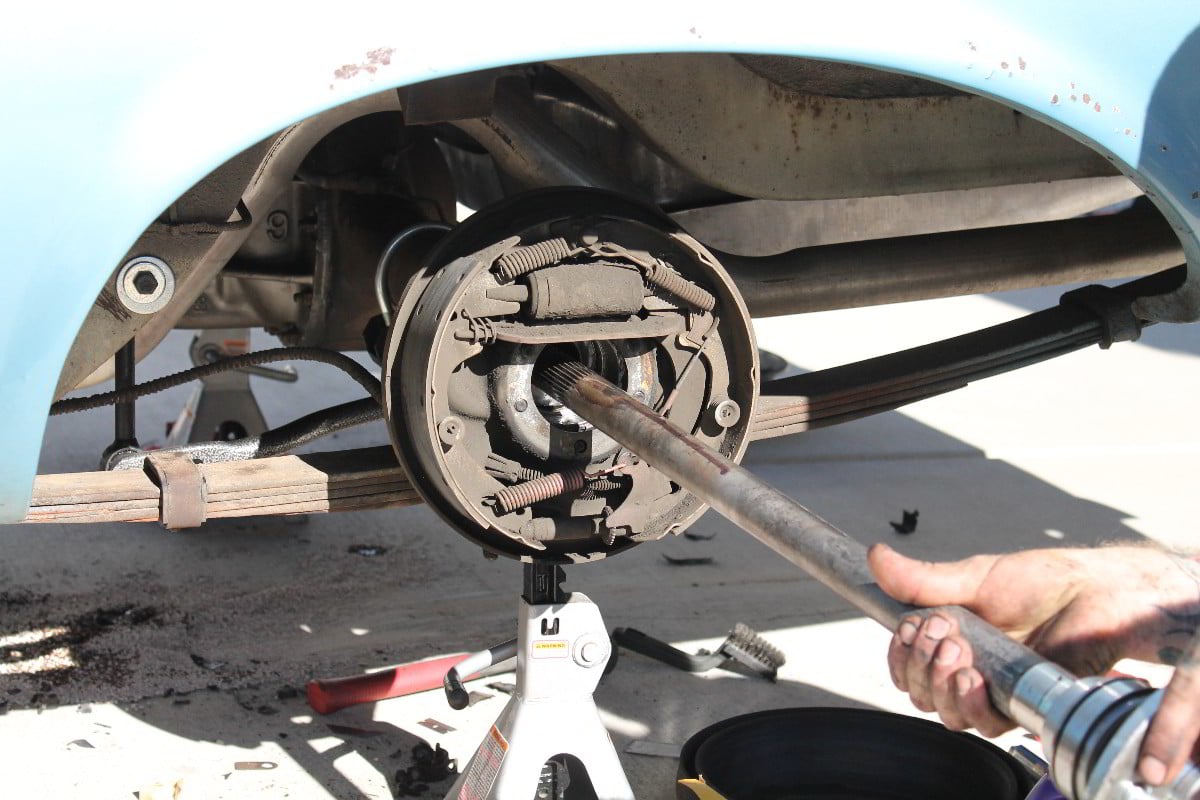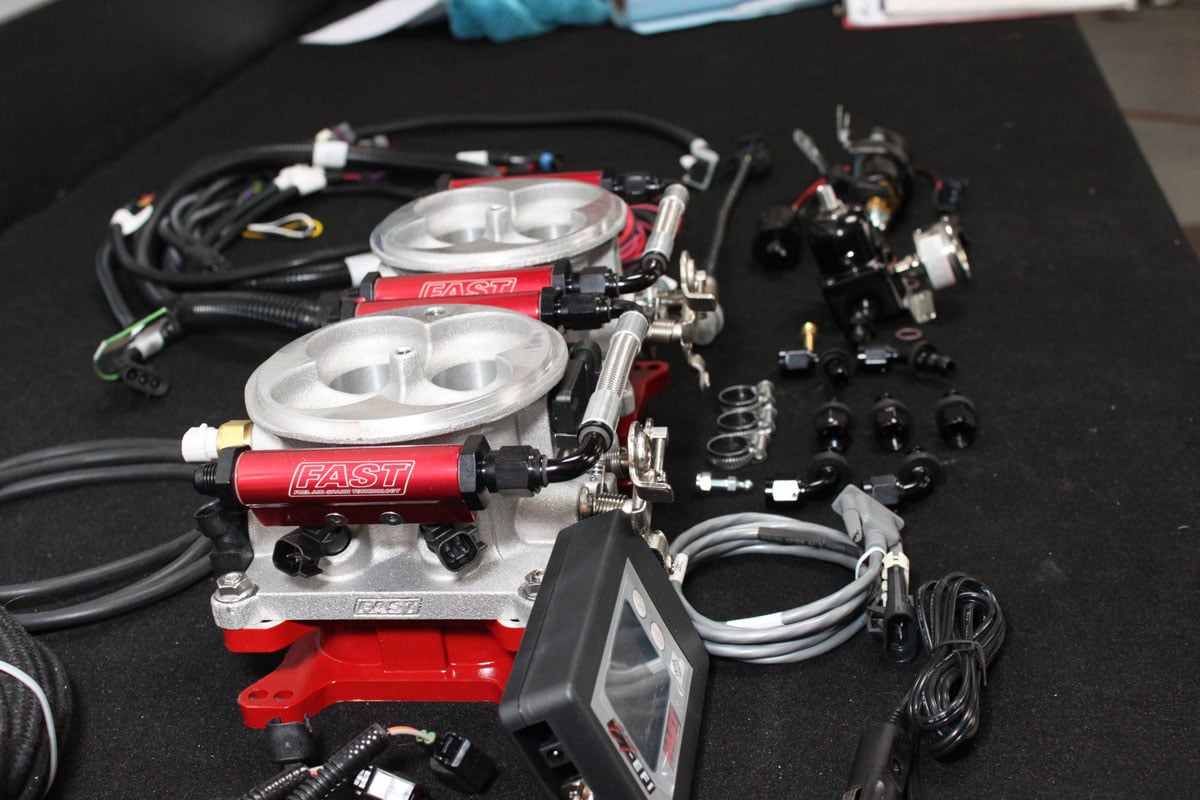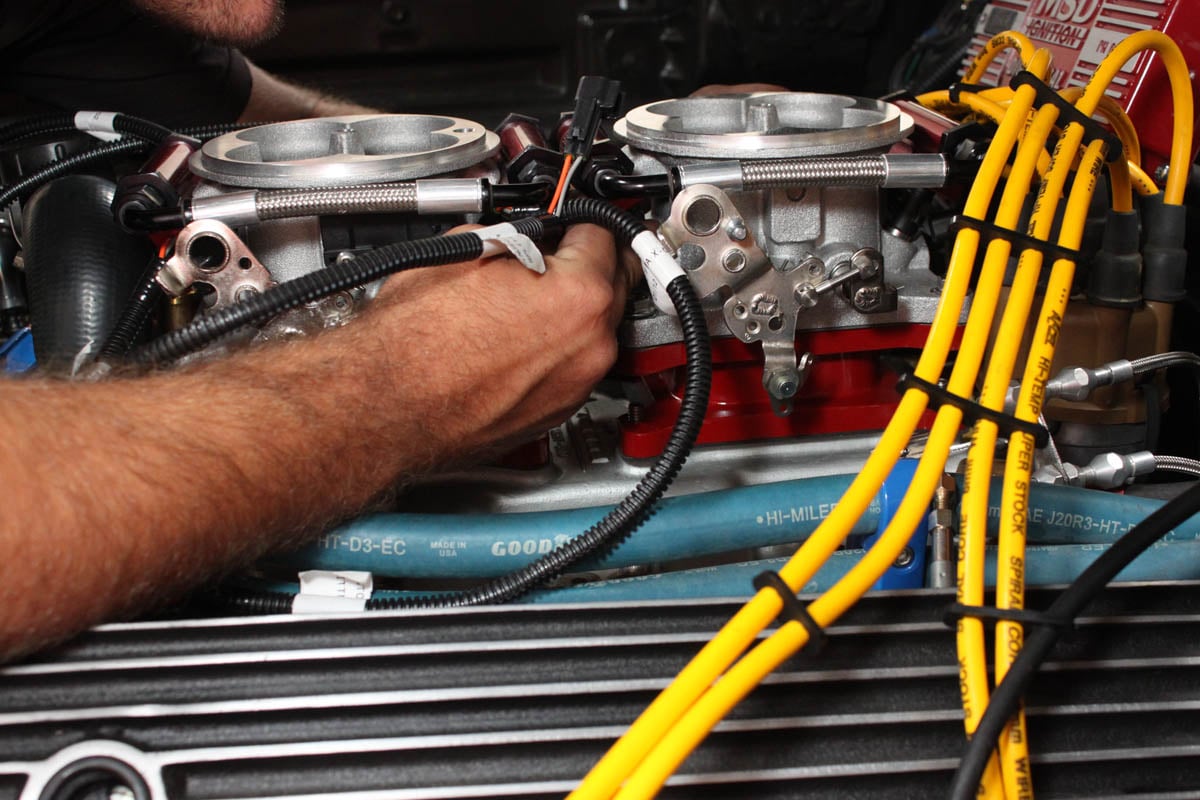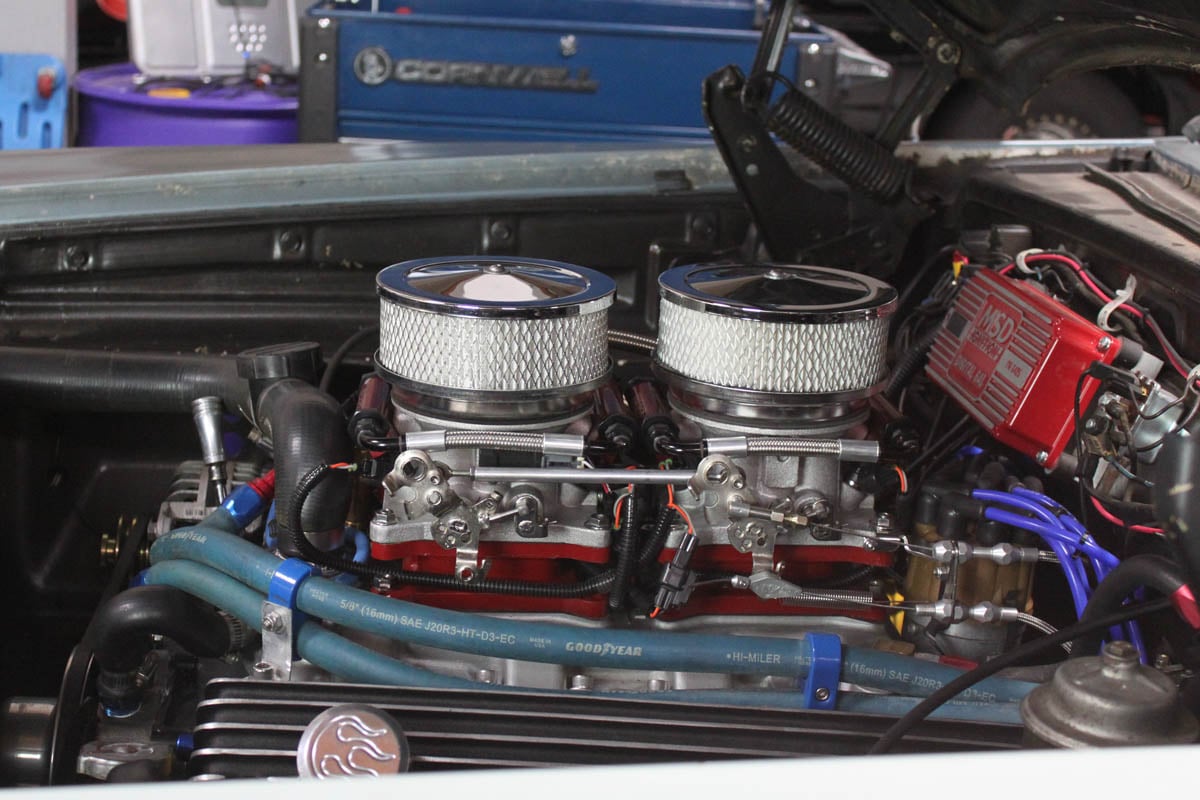 [1]When this Plymouth was first purchased more than 15 years ago, the whole intent was to have a musclecar that was fun to cruise in, was great on the freeway for longer drives, and maintained the old school look and feel. We wanted it to look more like a survivor than a high-dollar custom build and that look was achieved with lots of patina in the exterior paint and not-so-perfect trim all around the car.
[1]When this Plymouth was first purchased more than 15 years ago, the whole intent was to have a musclecar that was fun to cruise in, was great on the freeway for longer drives, and maintained the old school look and feel. We wanted it to look more like a survivor than a high-dollar custom build and that look was achieved with lots of patina in the exterior paint and not-so-perfect trim all around the car.
Track Attack Tech Article Archive
Looking more like a mild cruiser than a road race bruiser, we found some spirit under all that patina when we paid a visit to Willow Springs – and the project plan was all put into place.
FAST EZ-EFI: Installing A Dual Quad EFI System On A ’65 Belvedere [3]
Tech Install: Mopar 8.75 Inch Third Member And Axle Swap [4]
Tech Install: Hellwig Sway Bars On A Classic Musclecar [5]
Tech Install: Master Power Brakes Disc Brake Swap For 15-Inch Wheels [6]
Tech Install: QA1 Ups The Ante For Mopar Owners [7]
Tech Install: 1962-82 Mopar Steering Box Upgrade With Borgeson [8]
Dakota Digital VHX Gauges: An Inside Look At How They’re Made [9]
Tech Install: Derale Fluid Coolers Reduce Operating Temperatures [10]
Tech Install: Custom Ordering Moser’s 8-3/4-Inch Rearend On Line [11]
Rick’s Tanks Explains Why It’s Very Important To Be Baffled [12]
We Put Be Cool Radiators Through The Ultimate Test: The Race Track [13]
Garage Series: Cleaning Up Our Mess With A Ron Francis Wiring Kit [14]
Ron Francis iStart System: Going Keyless On A Classic Musclecar [15]
Strapped In: Bucket Seat And Harness Upgrades Fit For The Race Track [16]
Silver Sport Transmissions: Shifting Classic Mopars Into Overdrive
Mini Tubs: Making Lots Of Room For Some Fatties Under The Car
Project Track Attack Gets A Flaming River Steering System Upgrade
Thinking Outside The Box With A Custom Four-Link Rear Suspension
Garage Series: A Much Needed 4L60E Transmission Controller Upgrade [17]
From the factory, the car was void of sway bars, and it came with an engine that many people still have never heard of: the Polyspherical 318 [18], known as the wide block in some circles, or the A block. The engine was efficient, if anything, and on long drives the car would get close to 20 mpg with tall rear tires and 3.23 freeway gears in the one-legger differential. In other words, it did was it was intended to do, and we weren’t out to impress anyone with it.
The intake on the car was swapped to a (now obsolete) four-barrel with a Carter AFB, and eventually through a trade of intake manifolds, a rare, Weiand [19] dual quad intake (made of unobtainium) found its way onto the engine with a second Carter AFB added to it.
Mileage wasn’t as good anymore, and with the new engine being .060 over and running a set of TTi Exhaust [20] headers and mildly ported heads, we were down in the 11-12 mpg range. But driving the car was still lots of fun, and though we opted out of some of the longer trips, we were down for the many cruise nights in San Diego during the warmer months.
We had some plans for the car, we wanted more power and it needed some interior work. The car was purchased from the original owner in La Mesa, California, and it still wears the dealer license plate frame from 1965. The went to Tijuana for a repaint and upholstery, and came back looking okay, but there were many flaws covered up with bondo, paint, and fabric.
We knew we had a lot of work ahead of us, but that’s what project cars are all about: you fix what you can and drive the car in between upgrades. We did a lot of that, and laid out a plan for the car that would allow us to enjoy it regularly, rather than a complete, multi-month long restoration.
The Belvedere came to the Street Muscle Magazine stable of project cars towards the end of 2012 and it began to take on some refinements, all listed out below. It wasn’t until a fluke weekend that we decided to create Project Track Attack, and to make some more changes to how the old Plymouth handles.
Next Goal: Willow Springs To Test Out New Suspension, Wheels, And Tires
One of the main goals for Project Track Attack is to constantly improve our lap times. We happy to report that as we have progressed along with upgrades, our lap times at Big Willow have been dropping consistently with each upgrade.
Our goal is not to make this a full-race machine that becomes too much for the street, our goal is to show that while we can still enjoy a cruise night or a long drive to an event, we can also take the same car to the track and keep up with modern musclecars and sports cars.
When we first visited Willow Springs, it was just a rash decision: track fees were paid, regular track car was not ready, and open track day with West Coast Racing was within days. The Belvedere was fitted with a set of sway bars from Hellwig, and it had an OE-style front disc brake conversion. The rest was as it came from the factory in 1965, with the exception of a set of 15-inch cop car rally wheels and 60-series Mickey Thompson Sportsman ST [22] street tires [23].
As you can see through this build thread, we’ve made a lot of changes and have taken a full eight seconds off our lap times, but we have not sacrificed our street manners. We still make long drives in the car to different events, and it’s a nice, comfortable ride. We never really cared for the Cadillac feel, so we do have a firm ride, but it’s not bone jarring in the least.
Part of our plan to get back to Willow Springs also included wheels and tires, and since we made room for some fatties in the back, we wanted to take full advantage of that. Although we were very happy with our Weld Racing [29] wheels from a previous install, we wanted to add another inch to the width, and did so with Weld’s S76B –9.5-inches up front and a 10.5-inch wheel in the rear.
That also meant that we needed some new tires, and we contacted Falken [35] for a set of Azenis RT615 Performance Summer tires. We put our old rear tire size up front with a 275/35R18, and stuffed some 315/30R18 steamrollers in the back to give us a bigger contact patch on the pavement. We can’t wait to get out to Willow to give you a full assessment of this new tire and wheel setup, but after a couple of runs over a mountain road we can tell you this: the Belvedere rides on rails now, and we are confident that the trip to Rosamond will be a blast.
4/3/2017 – We Needed Better Control Of Our Transmission
We loved our Silver Sport Transmission [37] A41 overdrive transmission, but we weren’t happy with the way it shifted, so we got the good news from Silver Sport that they upgraded to the TCI Auto [38] EZ-TCU transmission controller, and we were all over it. It was pretty simple to install, and the options it gave us allowed us to take better control of the shifting and how the torque converter works with the speed and line pressures.
During normal driving through the neighborhood, we noticed that almost as soon as we got into third gear, the transmission instantly shifted to overdrive – even at a very low speed. After installing the EZ-TCU, the transmissions started working like it’s supposed to, and shifting into overdrive doesn’t come on so quickly. Furthermore, we had a downshift problem prior to this upgrade that was resolved with the TCI Auto controller. Bottom line: our transmission works the way it’s supposed to work now, and we couldn’t be happier with it.
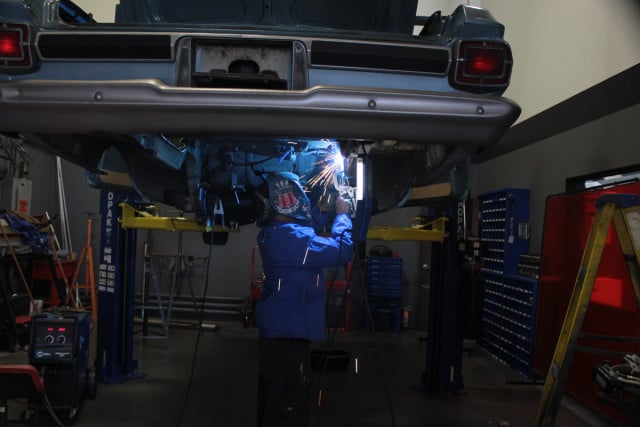 [39]10/28/2016 – The Project Gets Wicked With Full Coilover Suspension
[39]10/28/2016 – The Project Gets Wicked With Full Coilover Suspension
We haven’t updated in a bit, but we do have some great surprises for you with our latest series of installs coming up. The Belvedere has been in the shop for the better part of a couple of months getting a huge makeover, and this is going to put the car into full Pro-Touring territory with regards to our new suspension, wheels, and tires. And make for one badass-looking cruiser on the streets.
We decided it was time to replace the rusted trunk floor, and Classic Industries came through for us. In order to install our mini tubs, we reached out to US Cartool for a pre-cut kit, and AMD for some new inner wheelhouses.
The first thing we needed to do, however, is to call on our friends at Classic Industries [43] and pick up a much needed trunk floor pan to replace our Swiss-cheese pan. One of the main reasons for the pan replacement was because we decided to do some cosmetic surgery on the Plymouth, and make room for a couple of fatties in the back: 315/30R18 tires that we picked up from Falken Tire [44]. That meant a cool mini-tub kit from US Car Tool [45] for the Belvedere, and to clean up the inner wheelhouses, we called on Auto Metal Direct [45] (AMD) for some fresh panels to tie into the upgrade.
That Moser-built Mopar rearend (left) is not going to work with our new rear suspension, so out it comes to make room for a four-link setup and super-wide 315 Falken Azenis tires.
Of course, fitting those huge meats in the rear meant we had to reach out to our friends at Weld Racing [48] and extend the lips a little bit, both front and rear, to accommodate the new tires. But even before that, we had to do a little planning and talk to Jeff Anderson with Moser Engineering [49] and sketch out a new plan of attack.
The Mopar 8-3/4-inch replacement rearend we installed last year is not going to cut it for our new plans. Control Freak Suspension [50] provided us with a complete front and rear suspension kit, including a four-link setup in the rear and double A-arms in the front, all of which will accommodate our new double-adjustable QA1 [51] coilovers all around.
In order to get this awesome, custom-built M9 housing from Moser Engineering (top), we first had to line up the bare housing under the car and fab up the suspension brackets (bottom). Once we tacked on the brackets, it was back to Moser for the finish welding and powdercoating.
The planning stages went full tilt for this phase, and the parts started rolling in for this huge upgrade. While it’s been a bit of work, Project Track Attack is going to come out of it on the other end ready for hitting the road – and the track – with renewed confidence and a wicked attitude that is going to get noticed.
12/23/2015 – Strapped In For The Race Track
We surprised a lot of people out at the race track with our 1965 Plymouth, and surprised them even more when they came to check out the Belvedere and saw a bench seat and lap belts. While our setup wasn’t exactly the safest, it was legal for open track day events and autocross, but wasn’t acceptable for sanctioned racing events. We agreed with many, that a pair of buckets seats and harnesses would be far better than the family seat that we were using.
Imagine hitting a corner at speed and you're sliding around on the seat. It can really break your concentration, so we decided it was time to step up our game. Procar had a pair of bucket seats that would be great for the cruising that we do, and also provide good lateral support for the track. Keeping us buckled in tightly was a set of Impact Racing five-point harnesses for driver and the occasional passenger. And to keep the shoulder belts in place we reached out to Chris Alston Chassisworks for its new universal harness bar, which we mounted to the inner quarter lock pillars.
March 2016 – Kicking Things Into Overdrive
We love racing the Belvedere, but we also put some miles on it, too. So we needed to add overdrive to our long distance driving, and reached out to Silver Sport Transmissions [37] for a modern 4L60E swap into our old Mopar. We got a kit for a later model and only had a few very minor modifications to do, and we were on the road again with an overdrive transmission.
The 4L60E is controlled electronically, giving us the ability to set shift parameters for the street, and for the track. A few turns of each knob gives us shift points, shift firmness, and torque converter lockup. After a few trips out on the road, we were able to make adjustments and determine where we were more comfortable with the settings. Out on the track, we set things a little higher so that we can be a little more competitive.
Although it's a GM transmission, Silver Sport provides everything necessary to bolt this transmission into an old Mopar. Adding overdrive puts us close to 17 MPG, and still gives us a stout transmission for the race track – the best of both worlds.
10/8/2015 – Adding Modern Technology To An Old Girl
After a week with a modern car like the Dodge Challenger Hellcat, we fell in love with the modern technology. So we hit up Ron Francis [64] again for its new iStart keyless start system. The iStart wires into your existing harness –with or without a Ron Francis wiring kit – and gives you keyless starts through key fob recognition. Adding power locks to the Plymouth meant that we can keep our keys in our pockets and the doors will unlock as soon as we show up next to it.
We replaced the ignition switch wiring with the harness from the iStart, added power locks, and now we have more modern technology without ever taking out the keys. The doors unlock, and a touch of a button starts the car.
7/23/2015 – Ron Francis Wiring Helps Us Clean Up Our Mess
We’ve added a lot of electrical components to the Belvedere, including an EFI system, in-tank fuel pump, electric cooling fans, and digital gauges. As you can imagine, the original wiring harness wasn’t built to handle all of our add-ons, and we were starting to add more and more. It was time for an upgrade, and Ron Francis Wiring made it so simple with its easy-to-follow instructions, that we were able to completely rewire the car in just three weekends.
The original fuse box contained just five fuses. The Ron Francis Wiring Express fuse box triples that amount, and allows us to run many common upgrades directly to the fuse box. The kit is designed with simple instructions and bags that are lettered so you can start with 'A' and work your way on through the alphabet. It's a big job to take on, but with moderate skills and wiring experience, it's something that you can do yourself in your own garage.
4/15/2015 – We Put Be Cool Radiators To The Ultimate Test
Depending on who you talk to, a copper radiator will do just fine for many people. The factory radiators were sufficient back in the 1960s, but with all of our upgrades and the performance driving that we do, we needed something more than what we had. We installed an aluminum radiator a couple years ago, but it wasn’t keeping the temperatures consistent, and at the track we were starting to see those temperatures rising.
It was a simple test: race at the track, come into the pits, and swap in the new Be Cool radiator. Then it was back out on the track to see if the temperatures would stay consistent. Our new Be Cool radiator got coolant for the first time at the track, so it truly was the ultimate test with results that could have gone either way. Be Cool held up to its namesake, providing temperatures nearly 50 degrees cooler than the 230 we were seeing on the track. Now that was real world testing!
1/5/2015 – Rick’s Tanks Baffles Us With A Custom Fuel Tank
Going faster, stopping quicker, turning sharper: this all led to a problem that we were having with fuel delivery. Fuel sloshing around in the stock fuel tank was causing us to lose momentum, or shut down completely with our EFI system. Carburetors store fuel in the fuel bowls, but our tank was the only place to get fuel. We reached out the Rick’s Tanks for a custom tank that could handle the corners as well as the Plymouth could.
Even with an in-tank pump, there was nothing keeping the fuel in the center of the tank where the pickup was sitting. Every turn left us starving for fuel, and when you run with cars like these, you can't afford the hiccups and sputtering. Rick's Tanks built us a custom tank based on the factory dimensions, but providing a little more room for exhaust pipes. The result is a baffled tank that keeps the fuel pump submerged, even during hard cornering, braking, or acceleration.
7/8/2014 – Moser Engineering’s New Mopar 8-3/4-Inch Rearend
Though we had previously upgraded our differential and axles, Moser Engineering took us one step further with a new housing that is fabricated in house, completed from flange to flange. The center section is designed after the housing they built for the Mopar Drag Pack Challengers, with a Ford 9-inch center section utilizing the 8-3/4-inch flange. Moser also offers a brand new nodular 489 housing, for a complete new rearend.
When Moser Engineering said 'new', that wasn't a stretch. The nodular 489 case is said to be the strongest, and is a brand new unit. The housing is fabricated at Moser, and though we opted to keep it as an OE replacement, Moser can install flanges for the big Ford bearings for autocrossing, and offers a choice of differentials from the Eaton Truetrac to a spool for drag racing.
2/18/2014 – Keeping Our Power Steering Cool With Derale
Being out on the track, one can expect temperatures to rise a little, especially when you’re spending 15-20 minutes at speed and working the big round wheel in front of you. The factory power steering system was running a little warm, so we opted to add an inline cooler from Derale to keep the temperatures down a little. Not only did we cool the fluid, but we were able to keep it from bubbling up while out on the track.
The cooler we chose from Derale is not a large cooler, but it still packs quite a punch. The stack-plate cooler was compact enough to mount just about anywhere, and cooled down the fluid temperature inside the reservoir about eight degrees, which helps to prolong pump, box, and fluid life.
1/13/2014 – Dakota Digital’s New VHX Six-Gauge Set
We’ve installed quite a few clusters in project cars, and with the high tech look of the VHX line from Dakota Digital we decided to upgrade our instrumentation. Hot off the presses from SEMA 2013 was the new five- and six-gauge VHX kits, and we fell in love with the looks, function, and adjustability. With all the changes we had planned for the Belvedere, the programmable speedometer was a blessing.
Usually, there's a sea of wires up behind the gauges, with each one requiring a separate power and ground. The cleanliness of the Dakota Digital install made the job a much easier task. With the control box mounted in a remote location, we only needed to run a couple of CAT5 cables from the control box to the back of the speedometer and tachometer. From there, standard phone cables are used for the four satellite gauges. Programming is a snap, and that comes in handy when switching up tire sizes or fuel tank sending units.
11/20/2013 – Borgeson Universal Power Steering Box Install
Once we started increasing our speed on the track, we noticed that the factory steering box was getting a little sloppy. Maybe the one-finger steering is great for a Cadillac, but not for a performance car. Even though the box had been rebuilt, it wasn’t as steady as we would have wanted. Fortunately, Borgeson Universal provided us with a smaller steering box with a firm feel and a quicker ratio.
The Borgeson steering box is smaller, and shaves about 13 pounds from the steering. The quicker ratio and firm feel keep us where we want to be, without any wandering like we had before. Mopars are notorious for having a tight engine bay, and the engine sits a little offset to clear the huge steering box, making it a tight fit for headers. Borgeson opens up a bit of room for headers, and to top it all off, it's a brand new box, not a remanufactured unit.
10/31/2013 – QA1 Suspension Upgrade For Classic Mopars
We’ll admit it: the suspension in our Mopar wasn’t exactly solid. The 50-year-old bushings were cracked, the ball joints were new, but the stamped steel control arms were a weak spot. Short of replacing the entire front end of the car, we reached out to QA1 for its new Mopar tubular control arms, dynamic strut rod, and single adjustable shock absorbers. This gave us a little bit more camber and caster, and allowed us to dial in our suspension – something that was rather limited with the factory eccentric bolts and stock arms.
QA1's tubular control arms a lighter and stronger than the factory arms, and the upper control arms provide a little more camber and caster adjustment. The dynamic strut rod keeps the lower control arm in place, and replaces the flexible joint on the factory strut rod with a fixed mount and a stronger Heim joint. The adjustable shocks help us to dial in oversteer and understeer so that we can keep the car in the direction we intended.
10/24/2013 – Master Power Disc Brake Upgrade
Our first trip to Willow Springs was just a trial run, we weren’t even sure if we’d be back with the Plymouth. Not only did the car surprise us but it surprised a lot of others as well. Since we had so much fun and the car did so well, we knew we would have to upgrade the brakes. We had already done an OE-style front disk upgrade, but the drums in the rear didn’t do much for slowing us down. We reached out to Master Power Brakes for a four-wheel disc brake upgrade.
Since we were still running our 15-inch steel wheels, we needed a brake setup that would fit behind the factory wheels. Master Power's Rallye kit is designed for just that, and provides all the stopping power you'd expect from a bigger brake kit, but in a compact package. This full disc brake kit allowed us to go just a little deeper in the corners at speed than we did before, with the confidence that we weren't going to overshoot the apex.
1/30/2013 – Hellwig Sway Bar Installation
We spent most of our time cruising to and from events and car shows, but one day we had a decision to make: lose out on the money we deposited for and open track day, or take the Belvedere. Since we had installed these Hellwig sway bars, front and rear, it triggered the need to make the Plymouth an official project car. One weekend at Willow Springs was enough to convince us that we were on to something, and Project Track Attack was born.
We weren't sure what to expect out on the track, and despite running with the stock, 50-year-old suspension, we were quite impressed at how well the car handled with the Hellwig sway bars. Although these Mopar B bodies are often seen at the drag strip, we surprised a few unsuspecting people at Willow Springs. Above: we caught a Porsche coming out of the fast turn onto the main straight. It's fun to take an old classic like this out on the track and hang with modern muscle and European exotics.
12/20/2012 – Moser Axle And Eaton Truetrac Upgrade
It was time to ditch the one-tire fryer and put something in our 8-3/4 Mopar differential that would allow us to lay down some 11s, and to get better traction in the corners. We reached out to Moser Engineering for a pair of alloy replacement axles and green bearings, as well as Eaton’s Truetrac differential.
The Detroit Truetrac from Eaton is a non-rebuildable, torsion type differential that should last the life of the car. Eaton told us to keep the fluid full and clean, and we won't have any problems. The Moser alloy axles are stronger than the factory axles, and lighter as well.
9/26/2012 – FAST EZ-EFI Conversion
Our first upgrade to the Plymouth was a FAST dual quad EZ-EFI system. We were already running a pair of Carter AFB carburetors, and the EFI system was installed to give us better starts, smoother idling, and better fuel economy. We achieved all of that, but were also able to gain about 20 rwhp after the installation. That just goes to show you that being properly tuned can unlock additional power that you didn’t know was there.
We had a tight fit with the Weiand aluminum intake, but the pair of throttle bodies fit and opened up a bit more power and a better overall driving experience. EFI conversions primarily help with fuel economy, but if you haven't tuned your carburetor then you just might find more power, too. Of course, the self-learning EZ-EFI continually tunes the system while you drive, so no matter where you go, the computer receives input from the wide band O2 sensor and makes adjustments.
